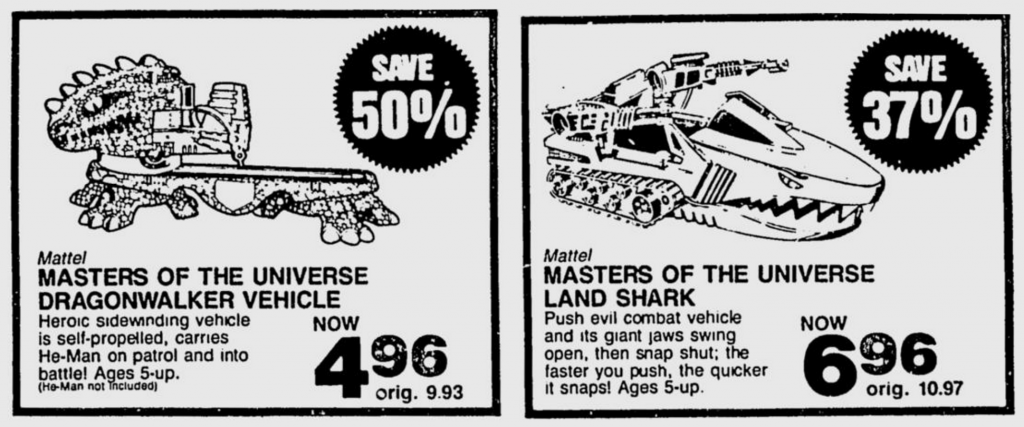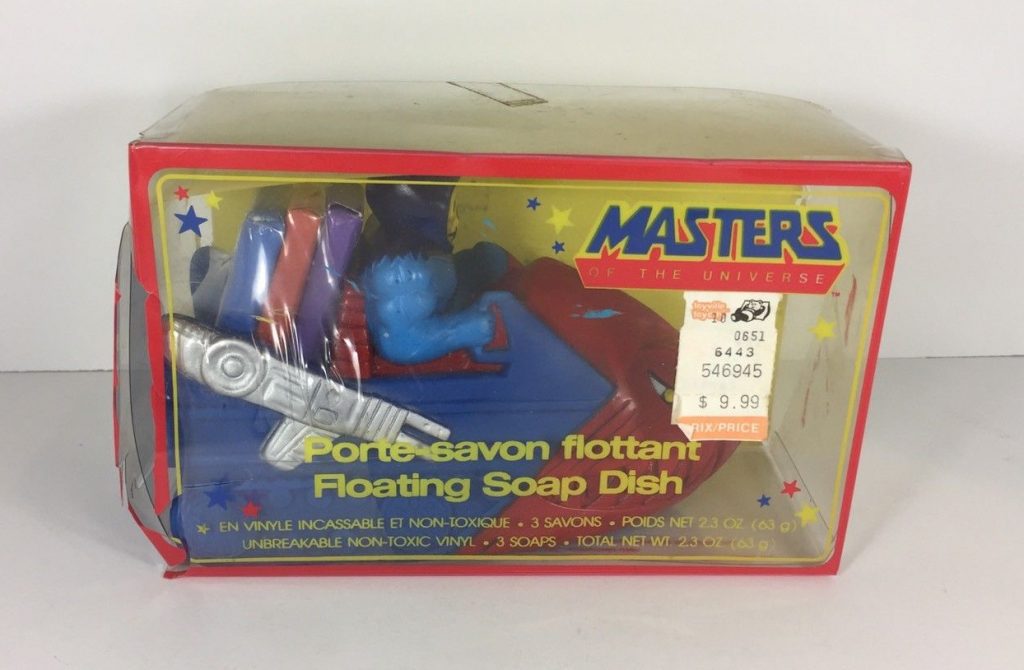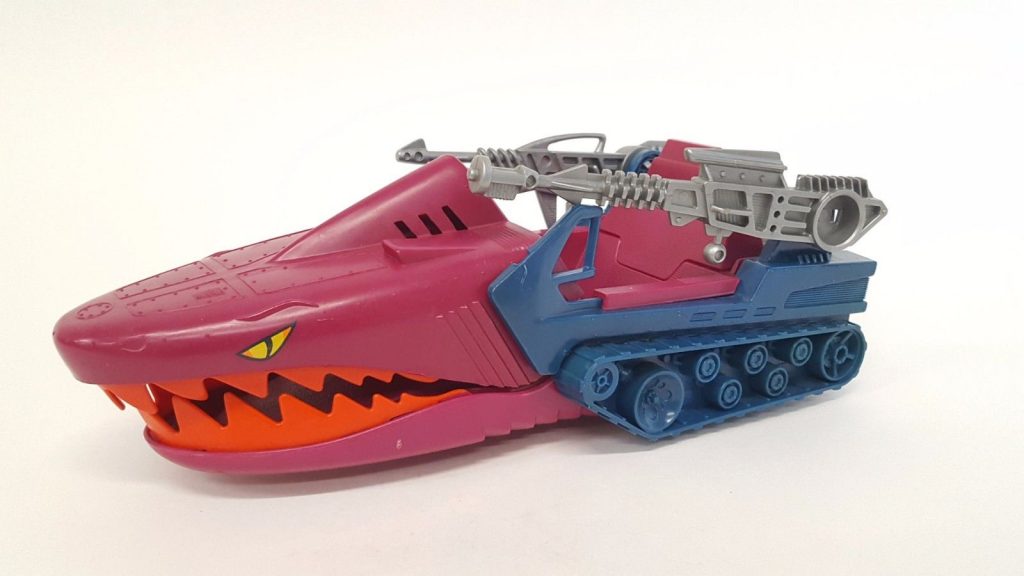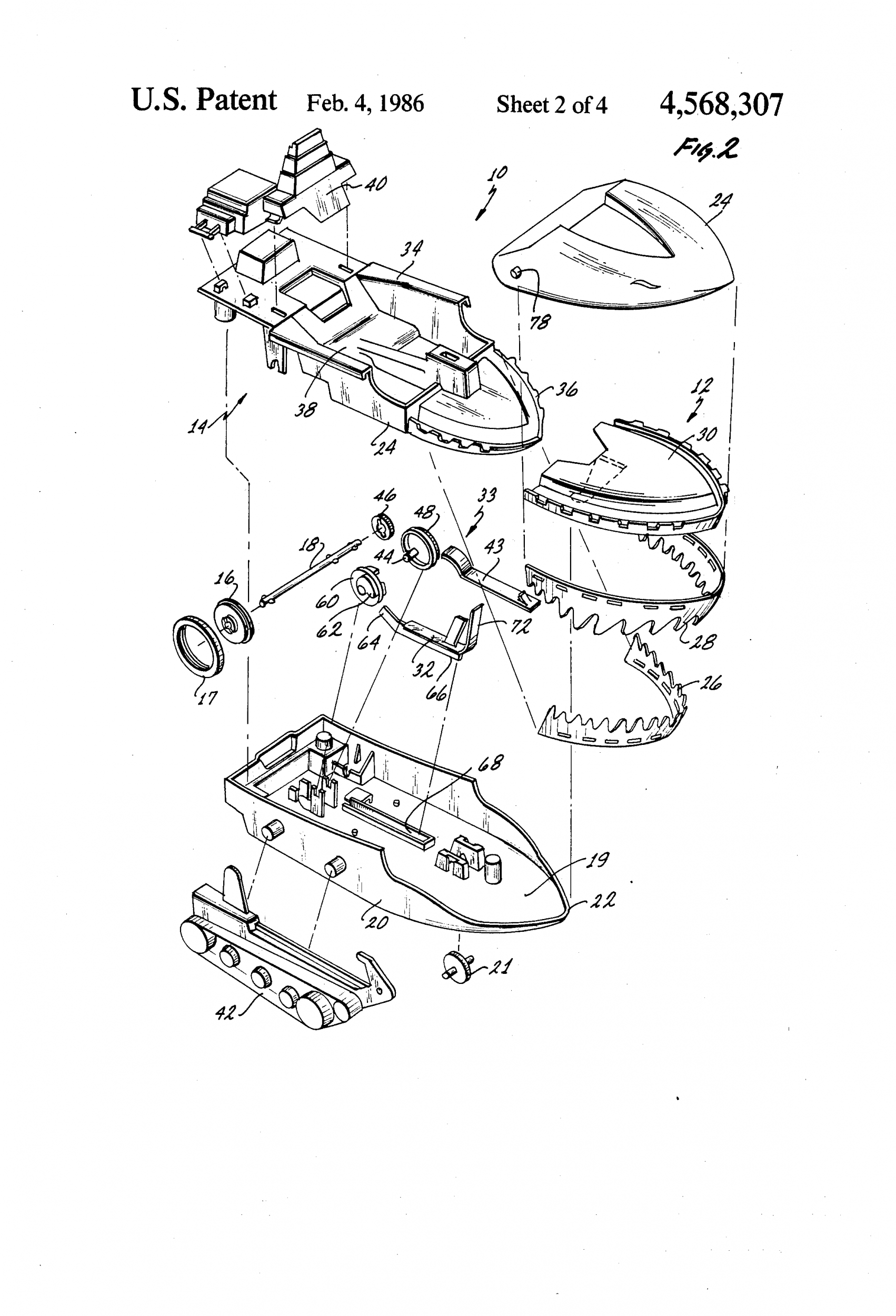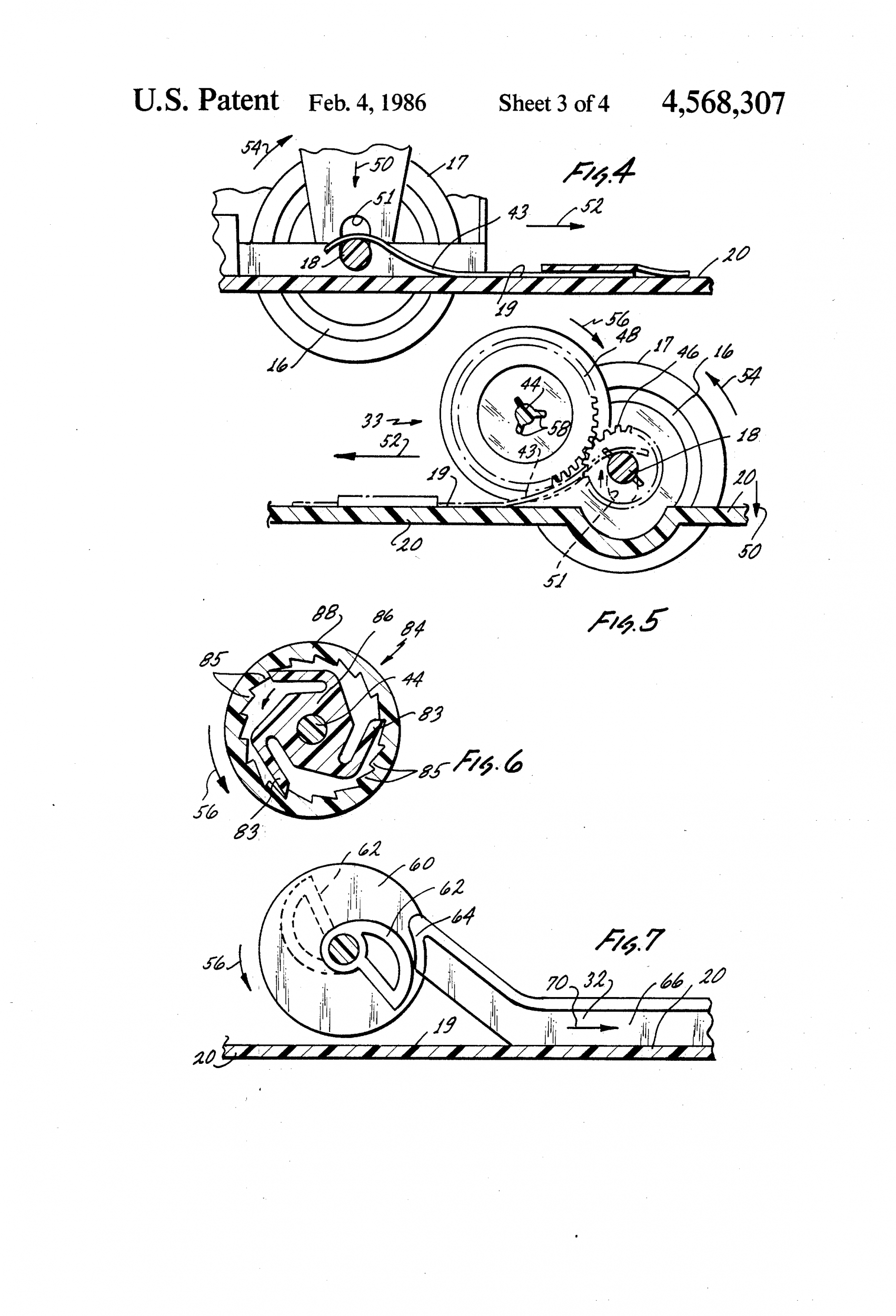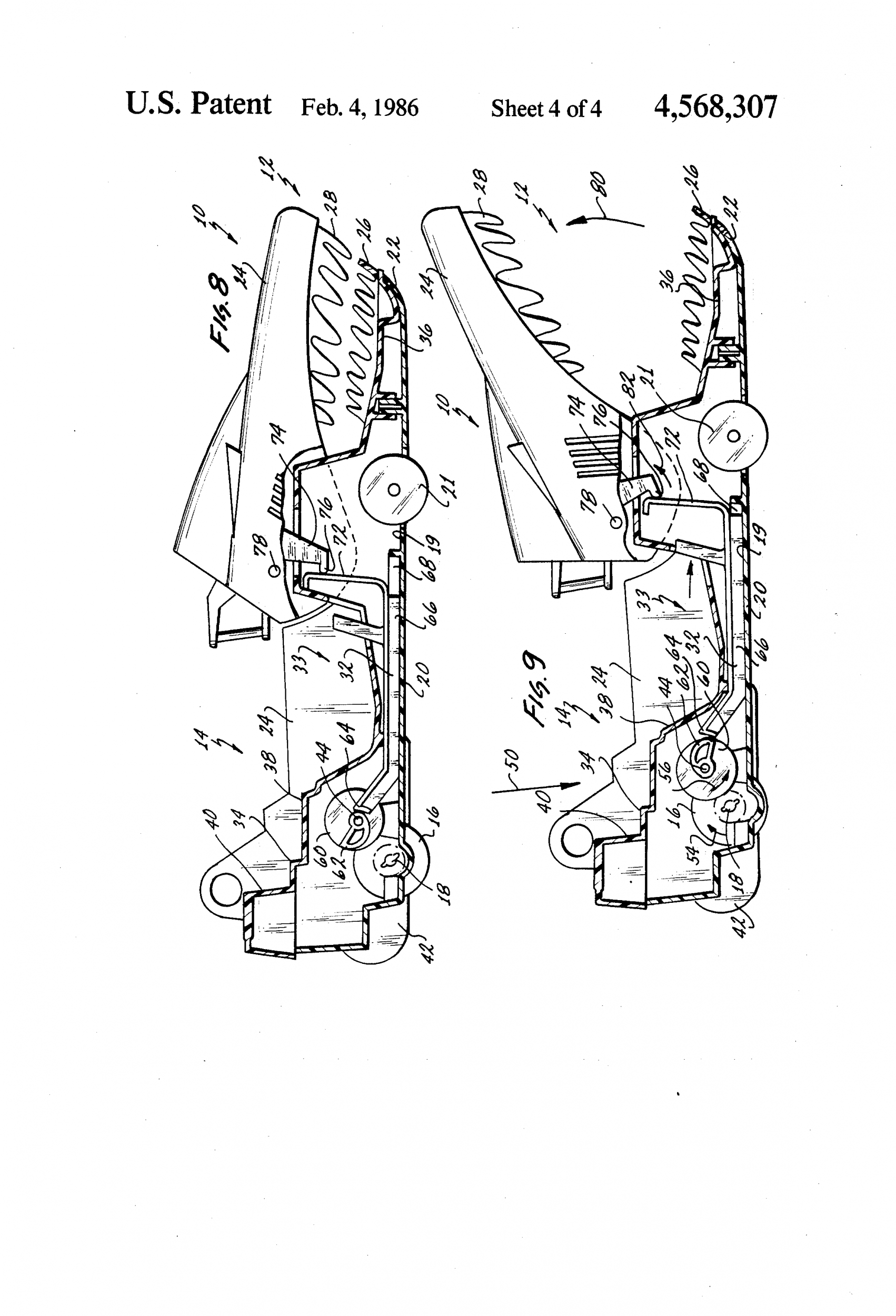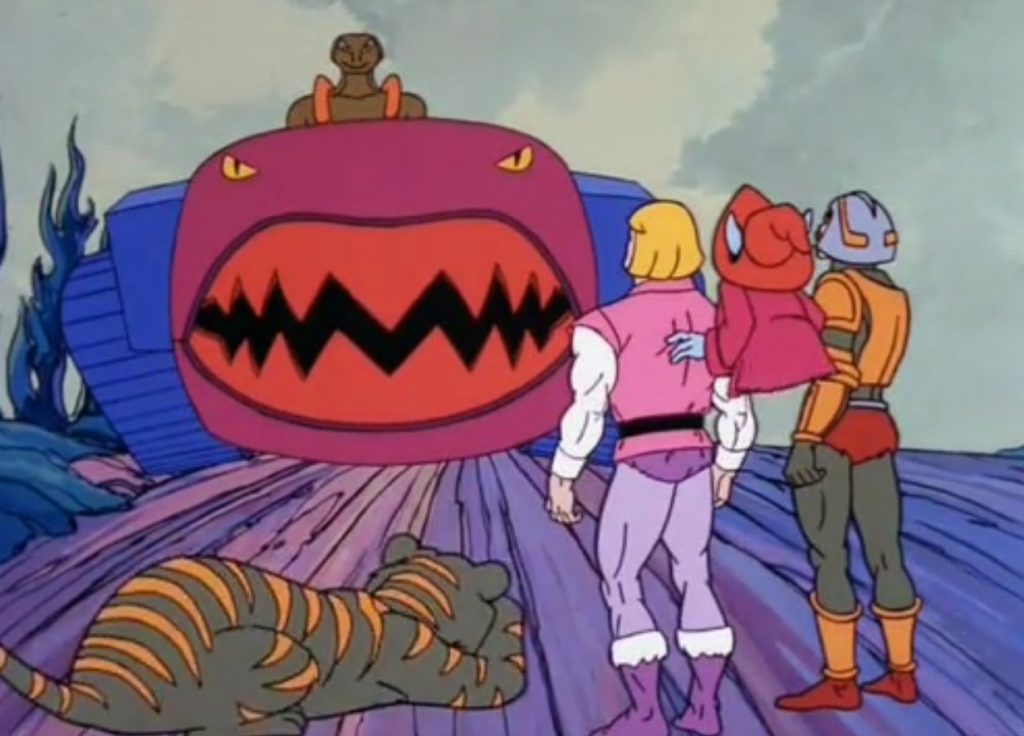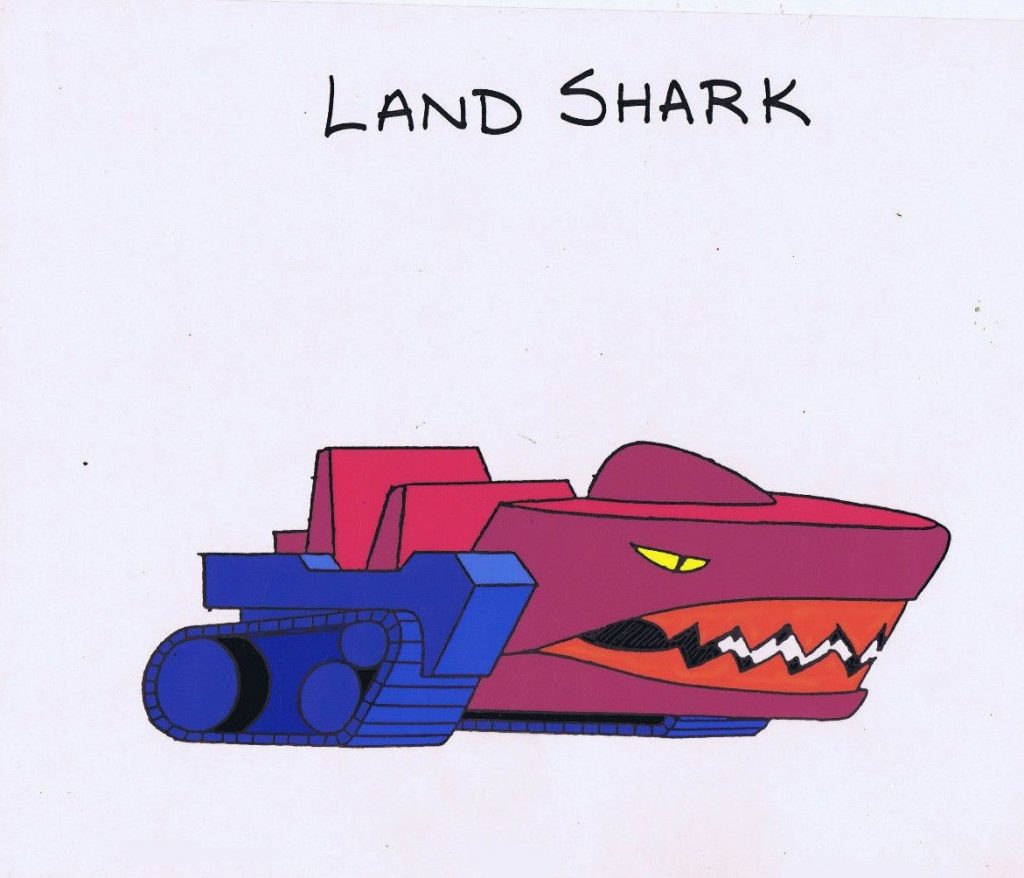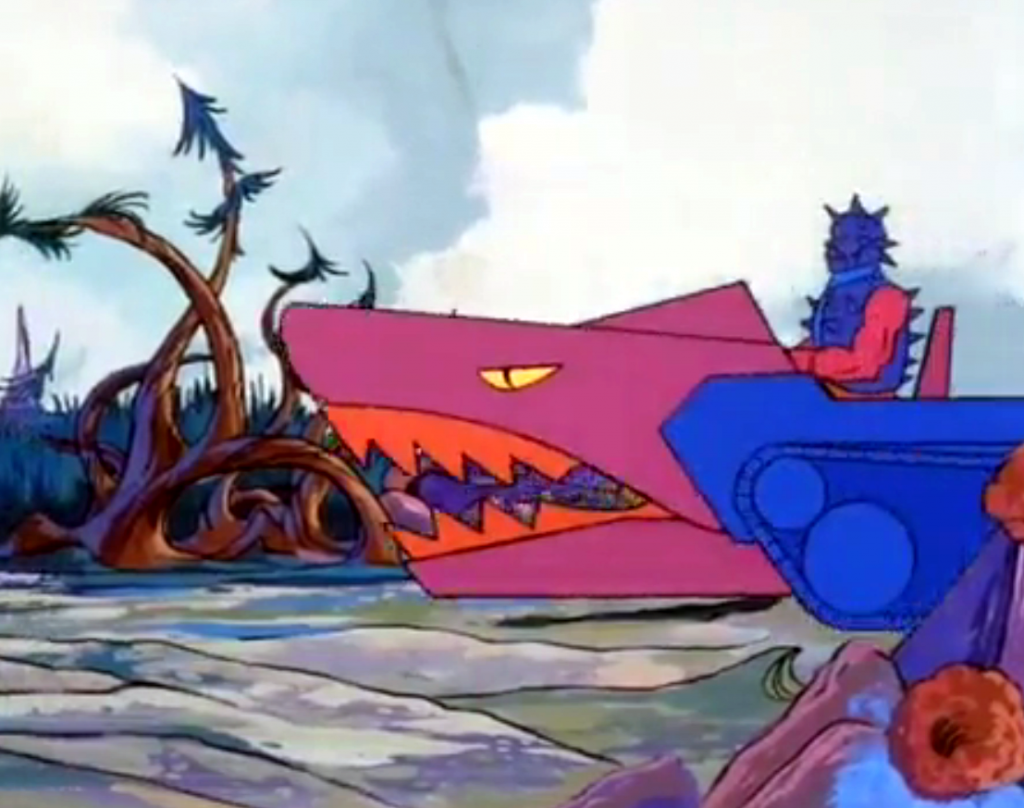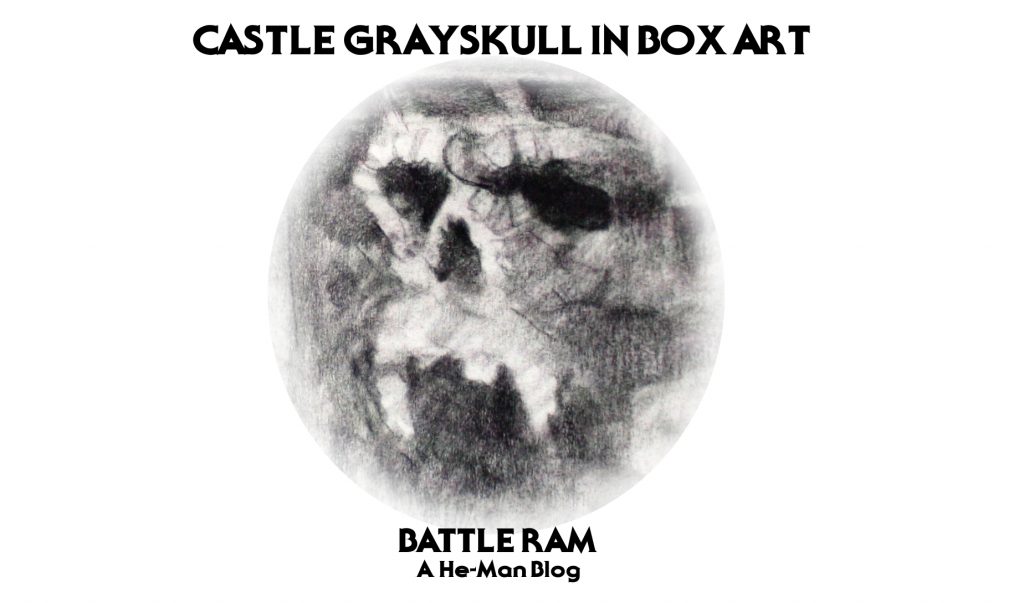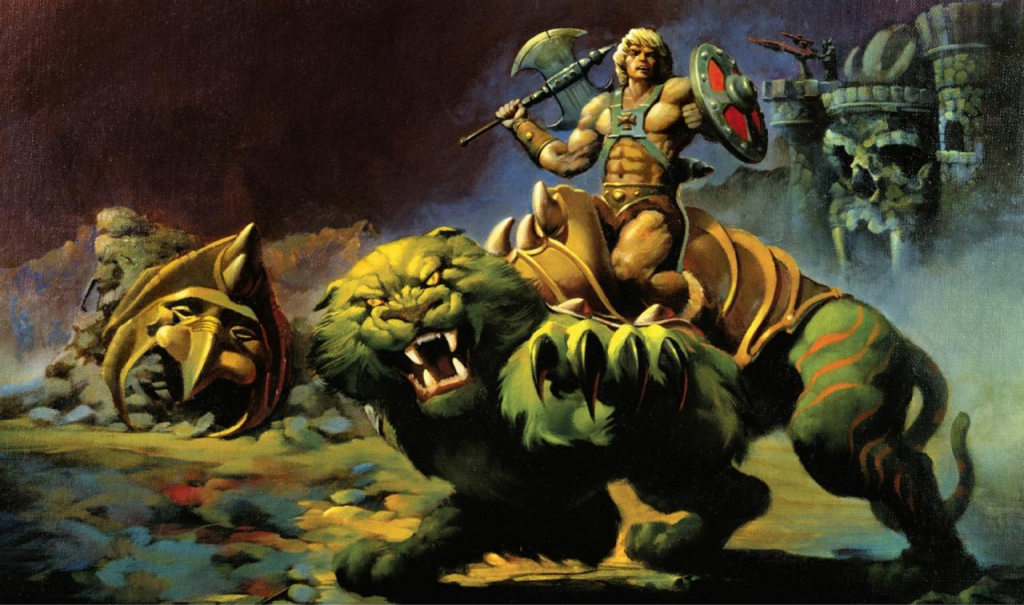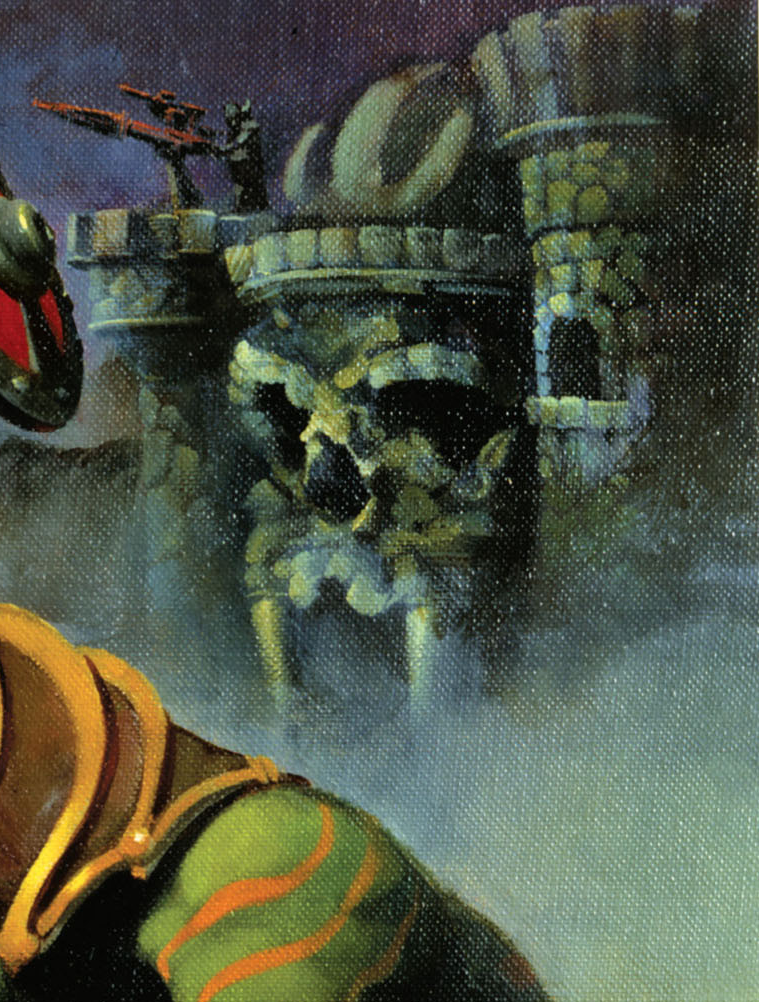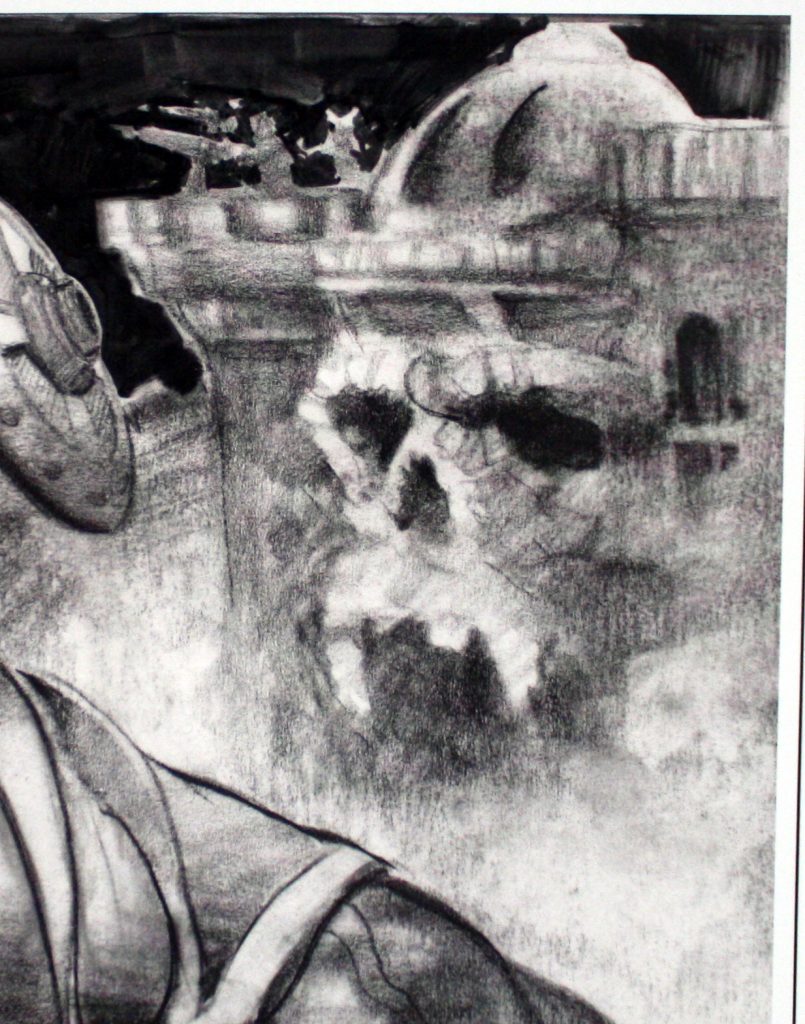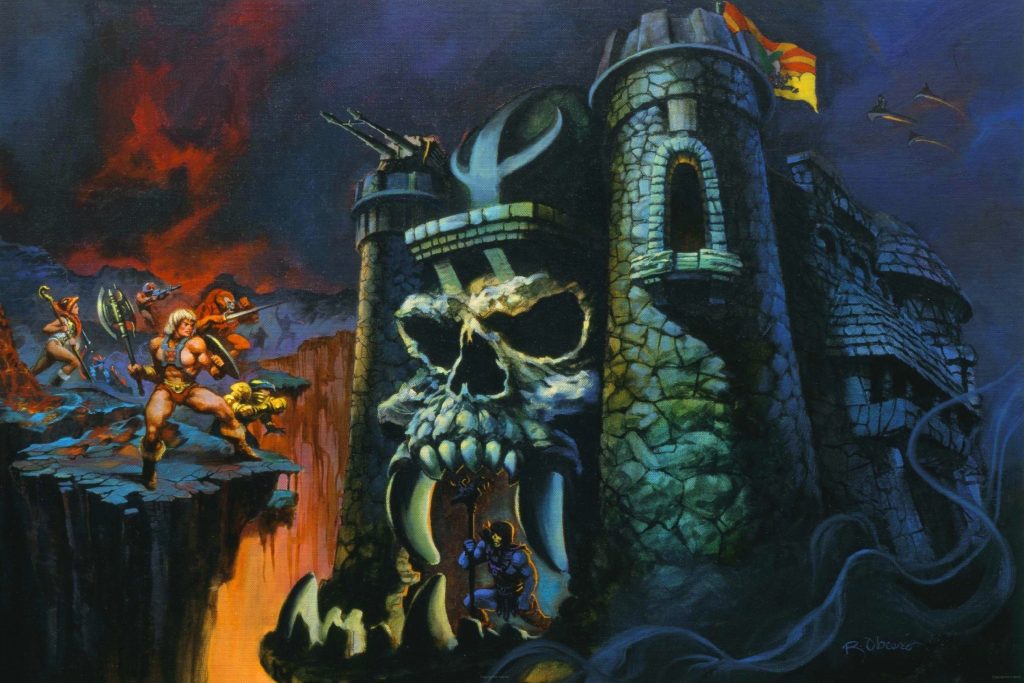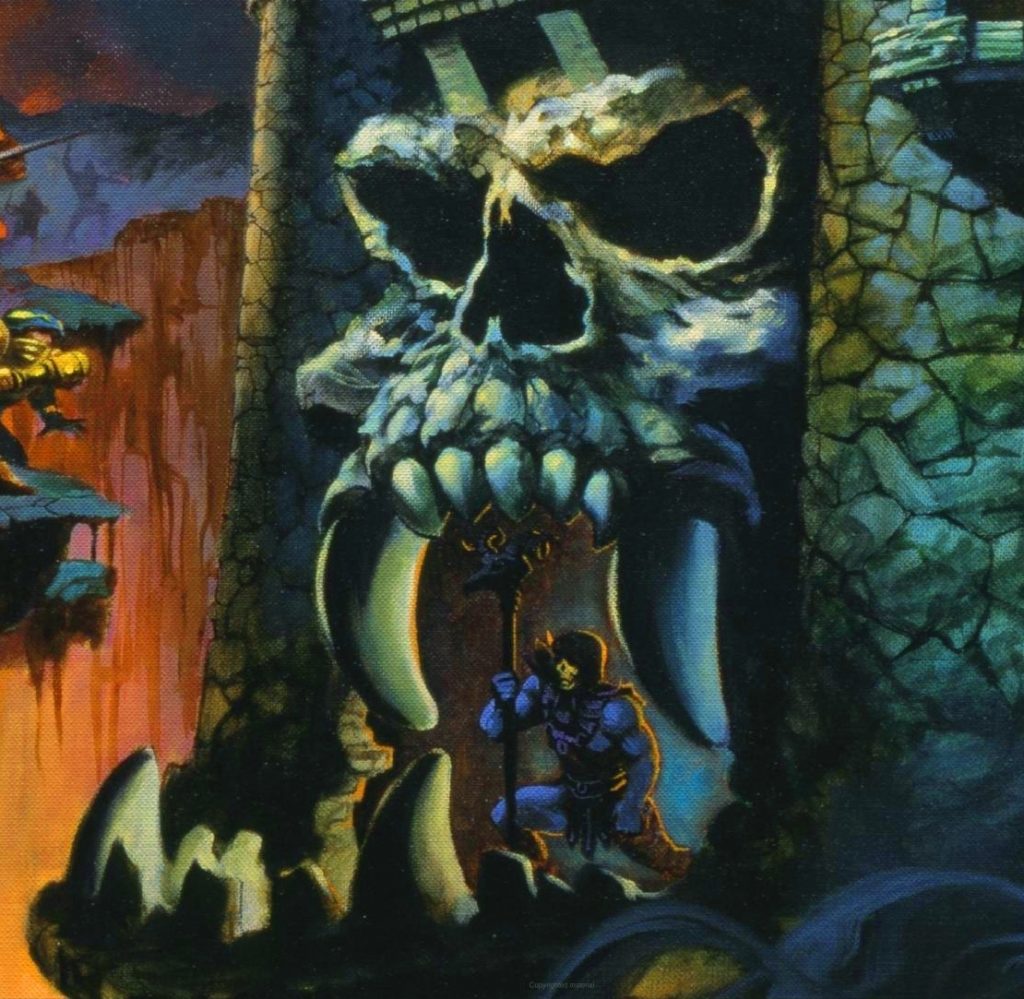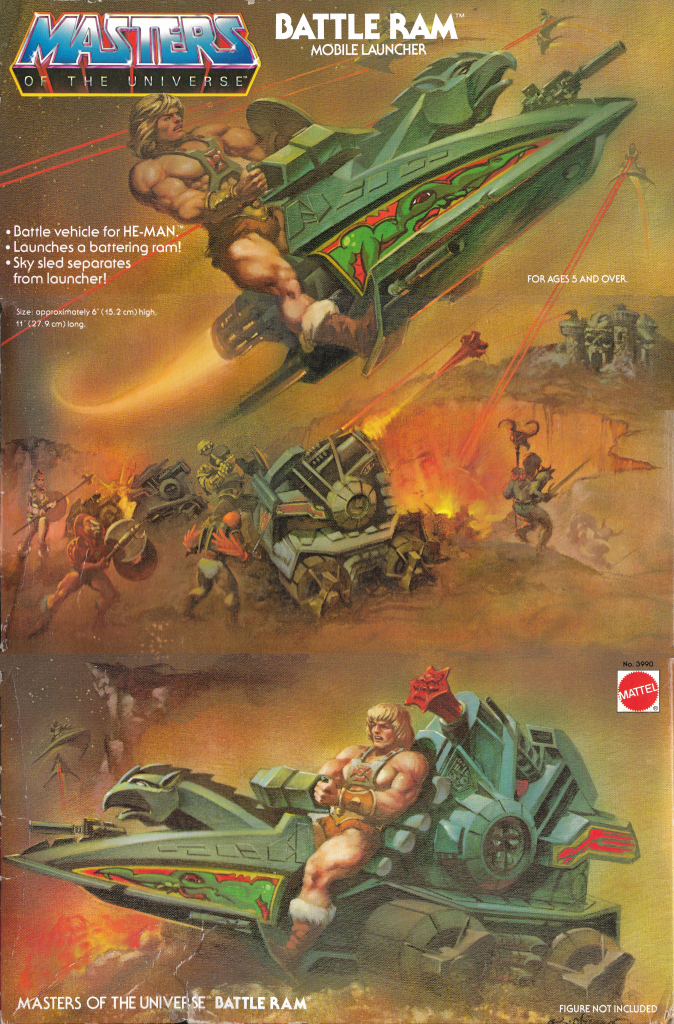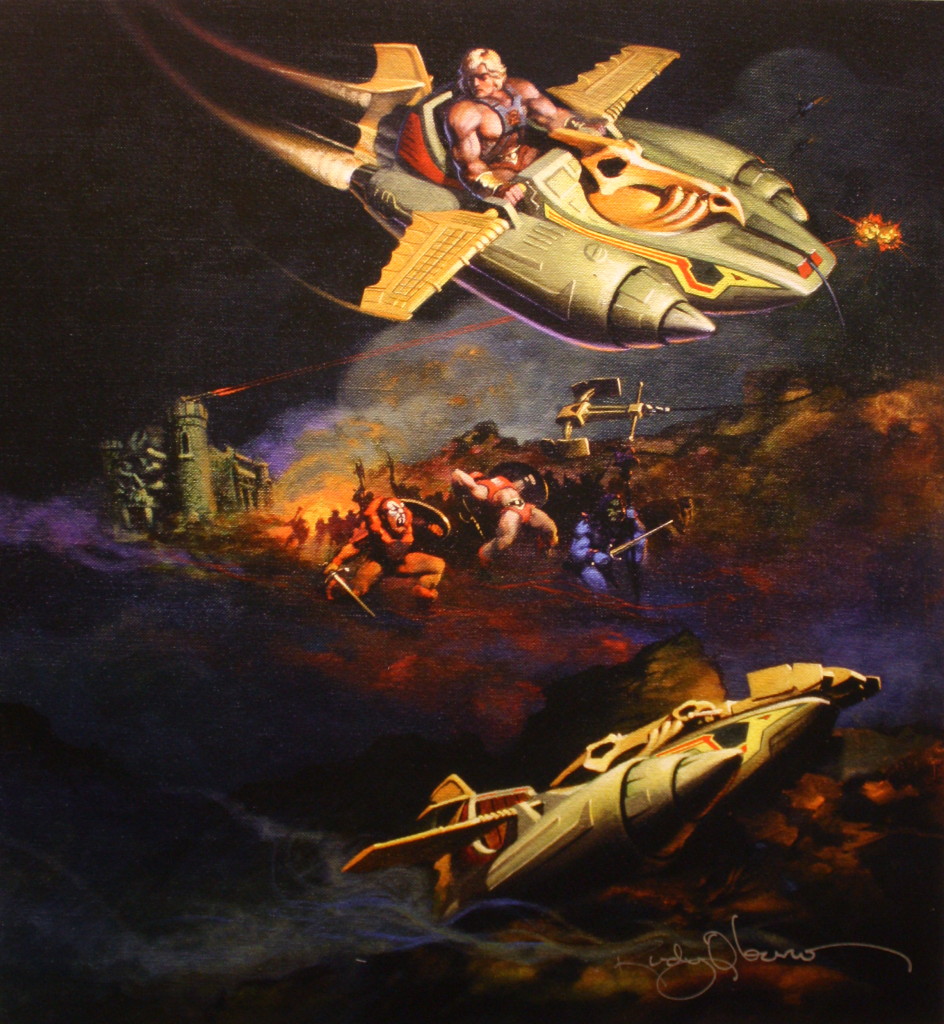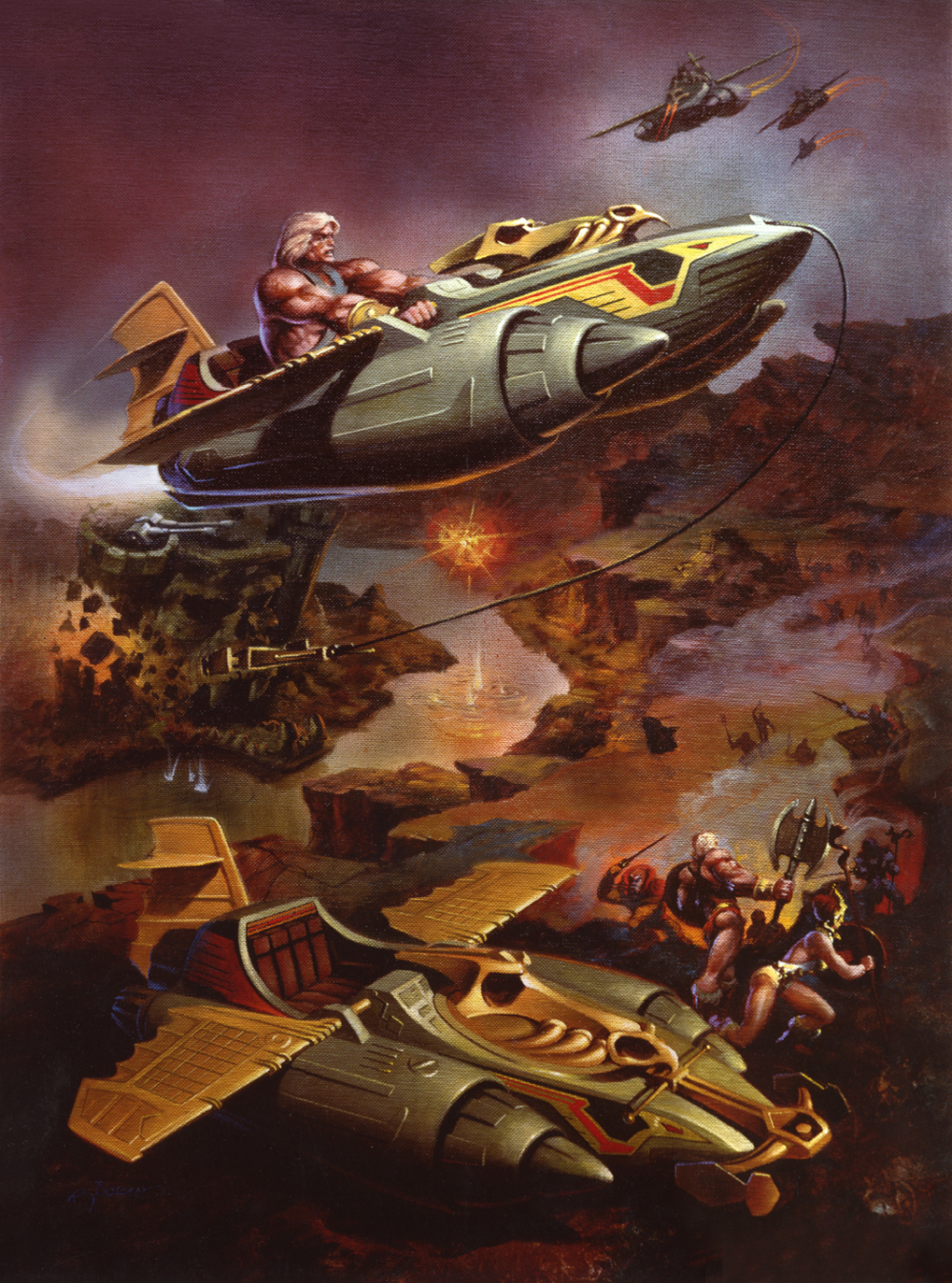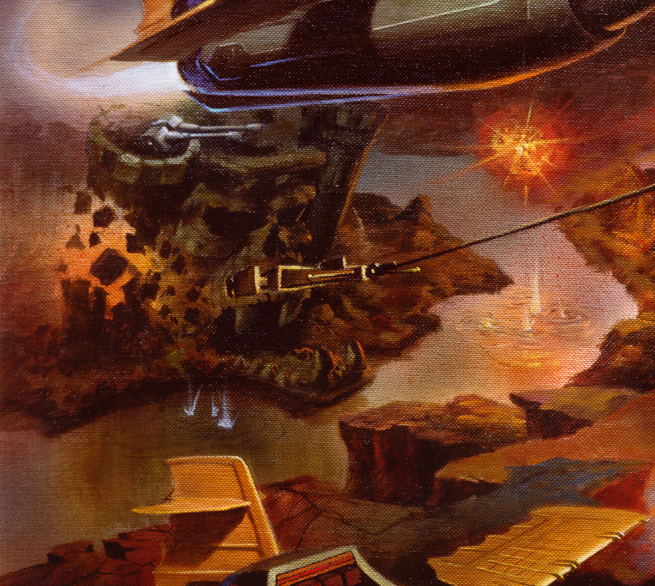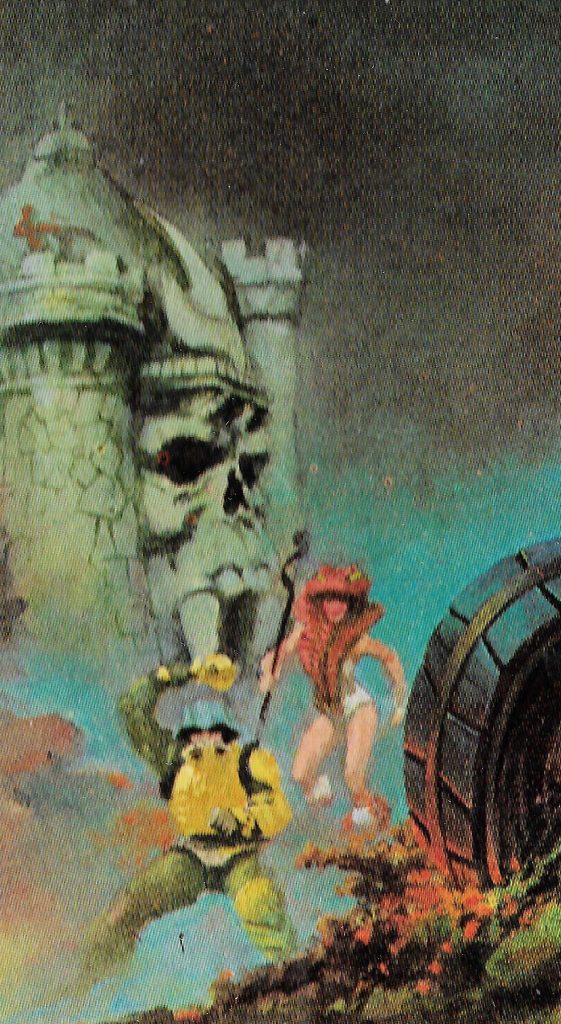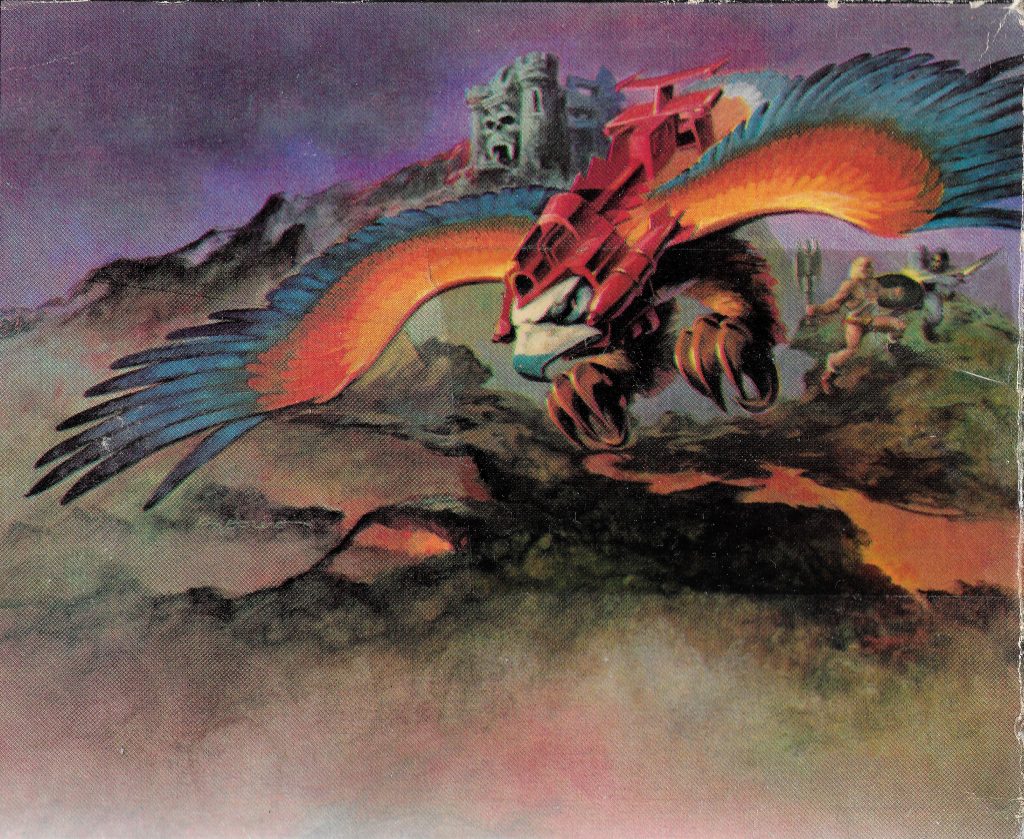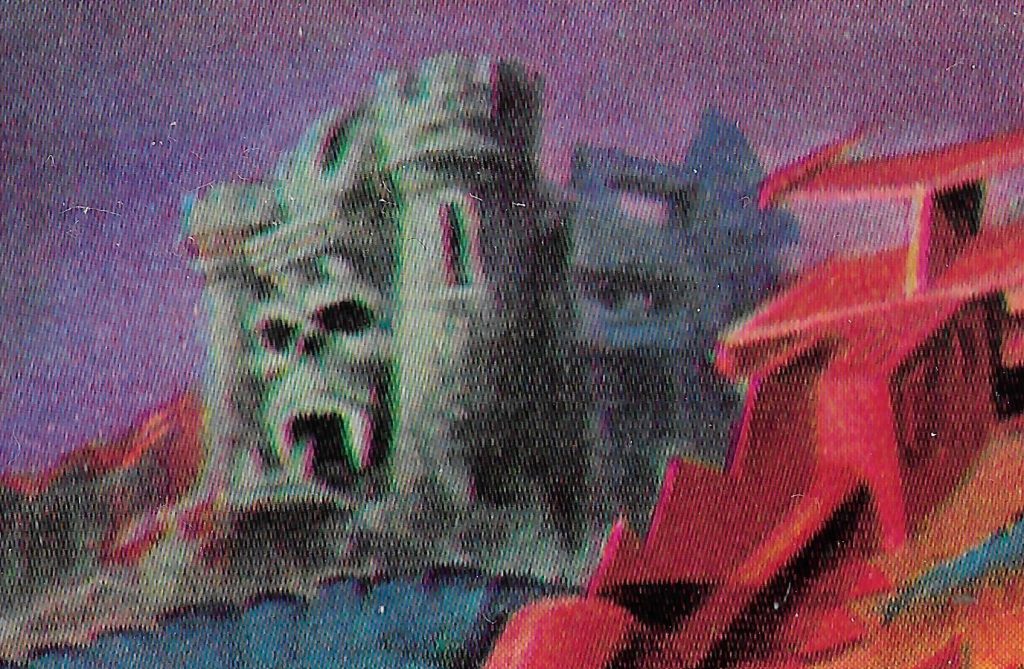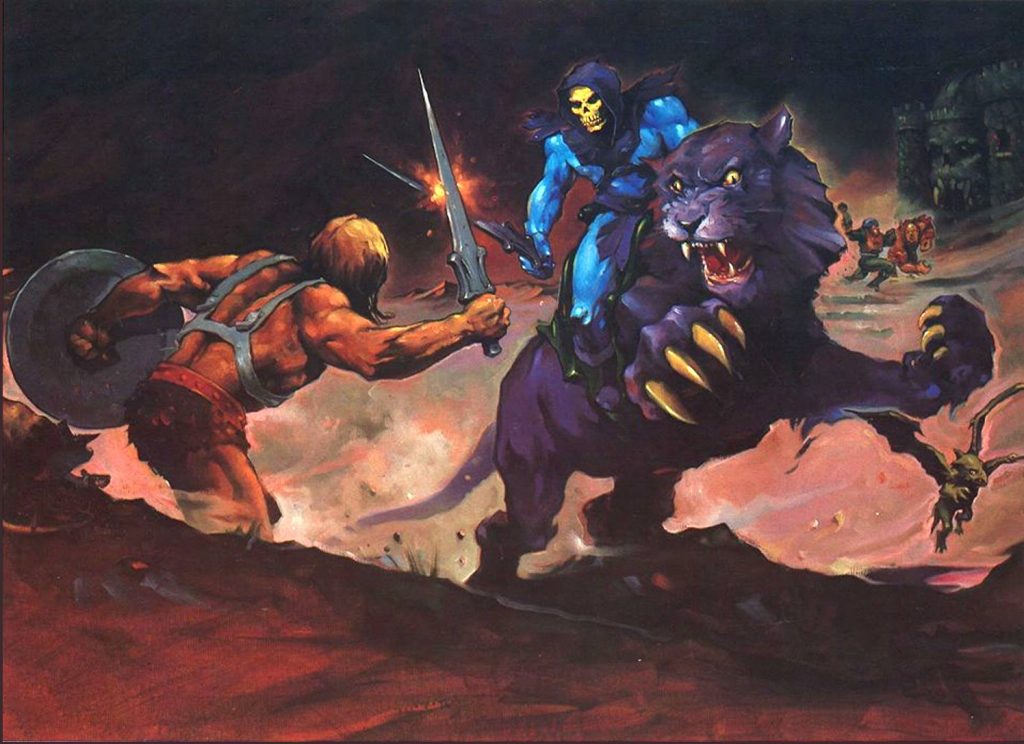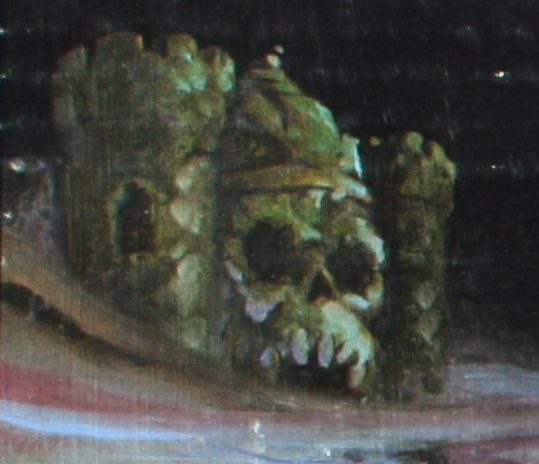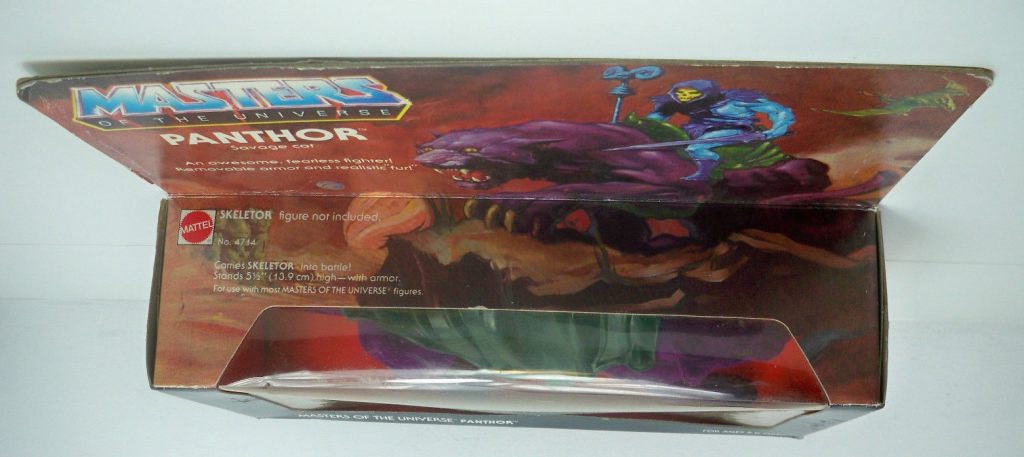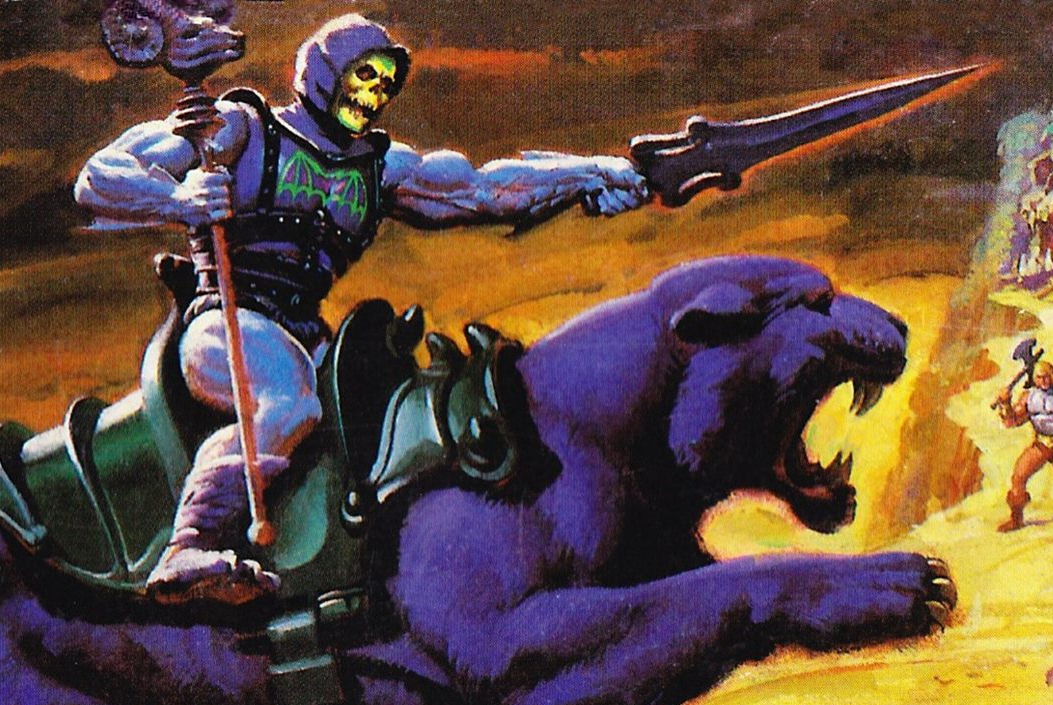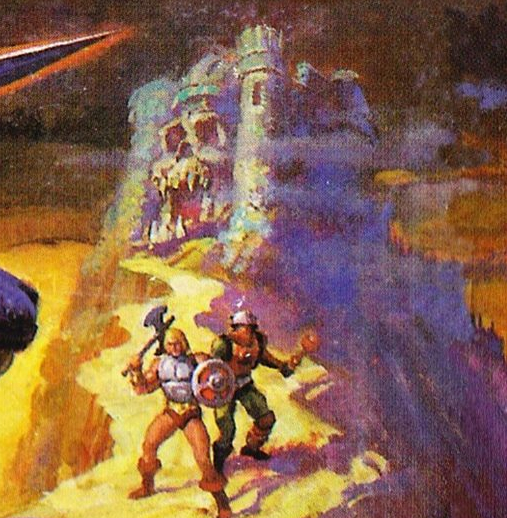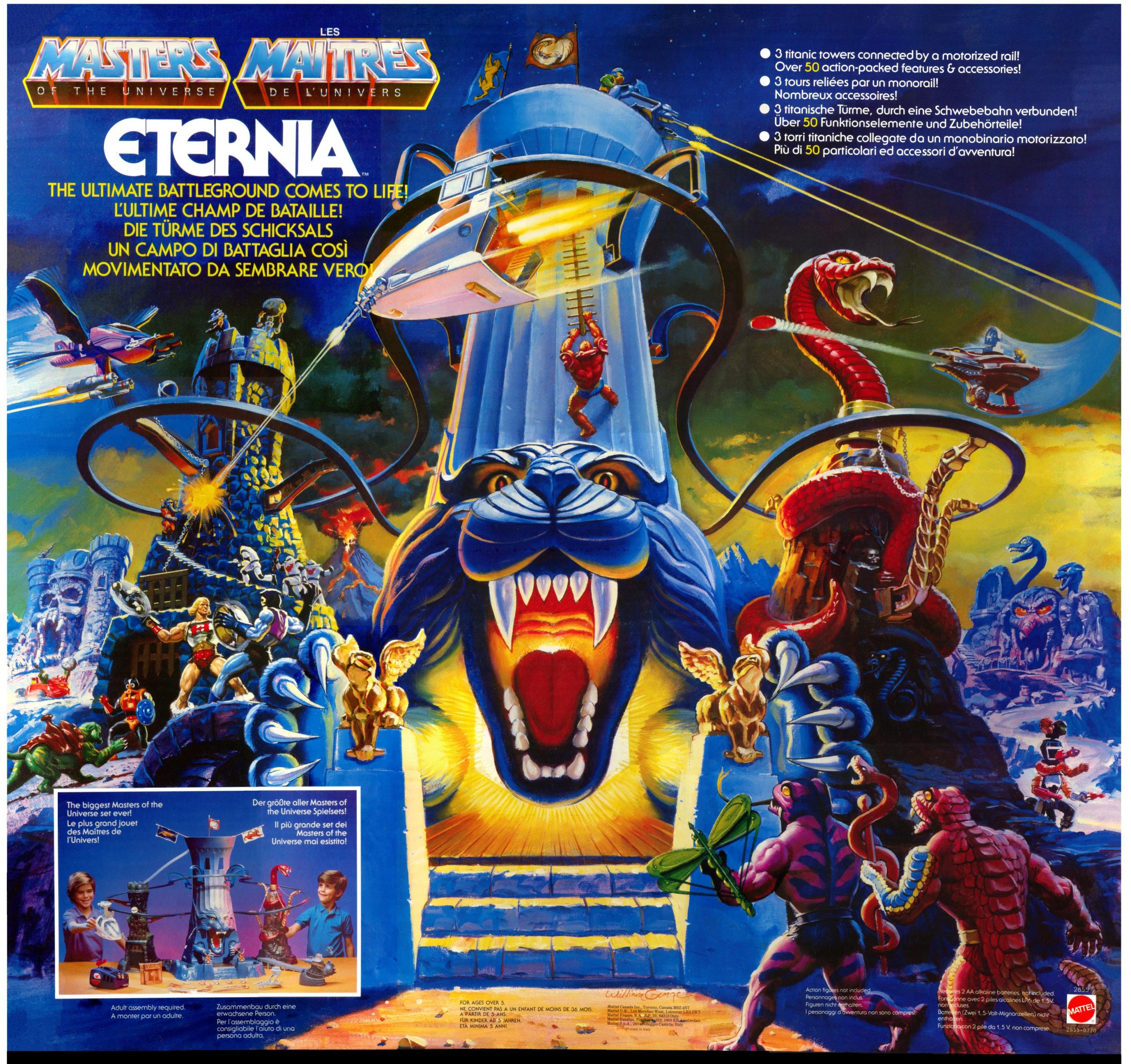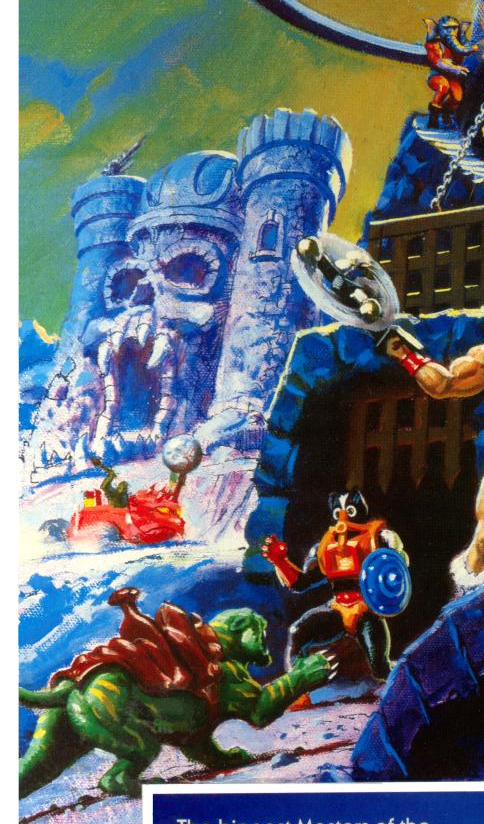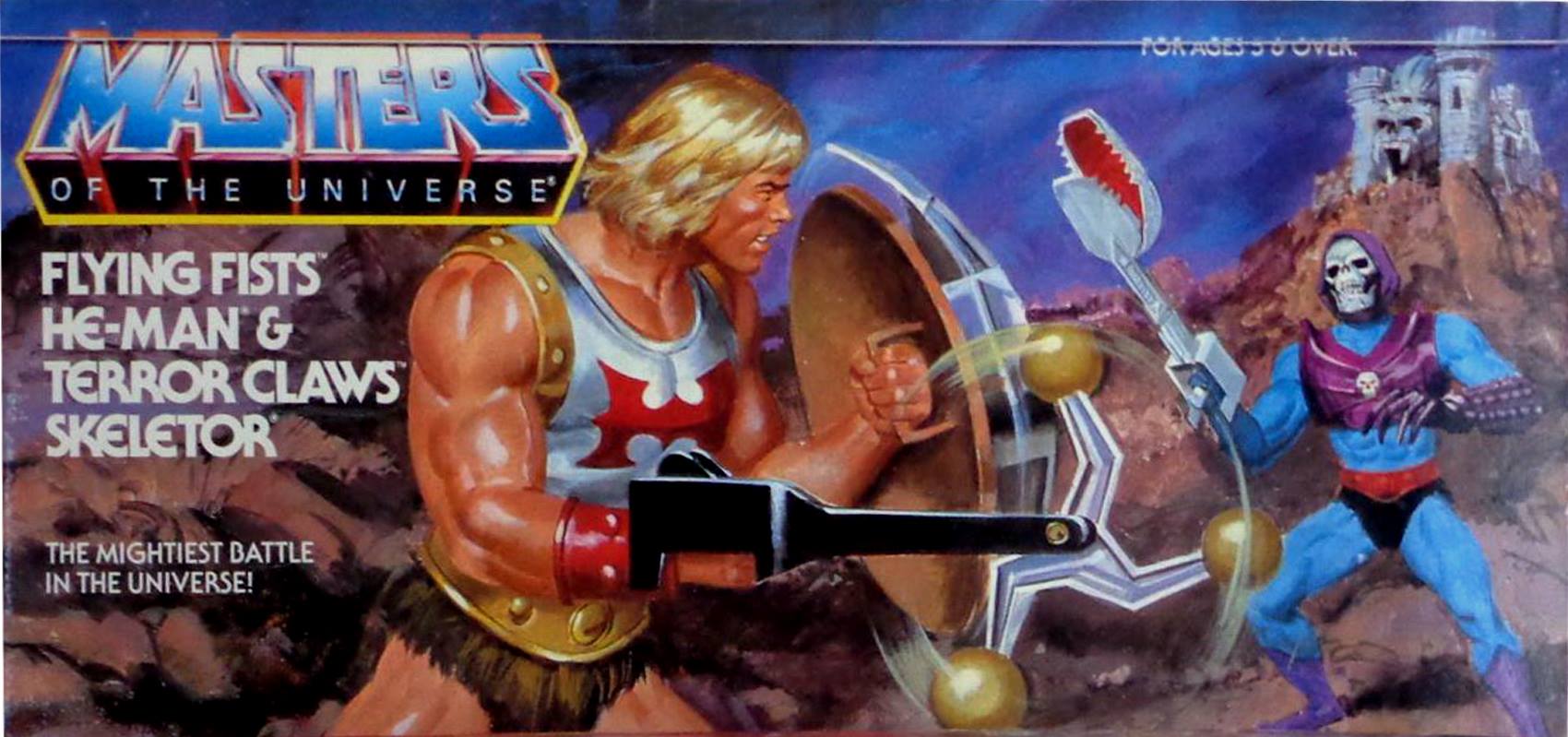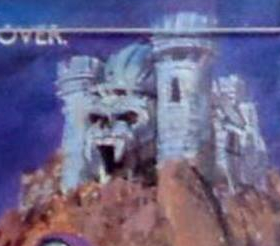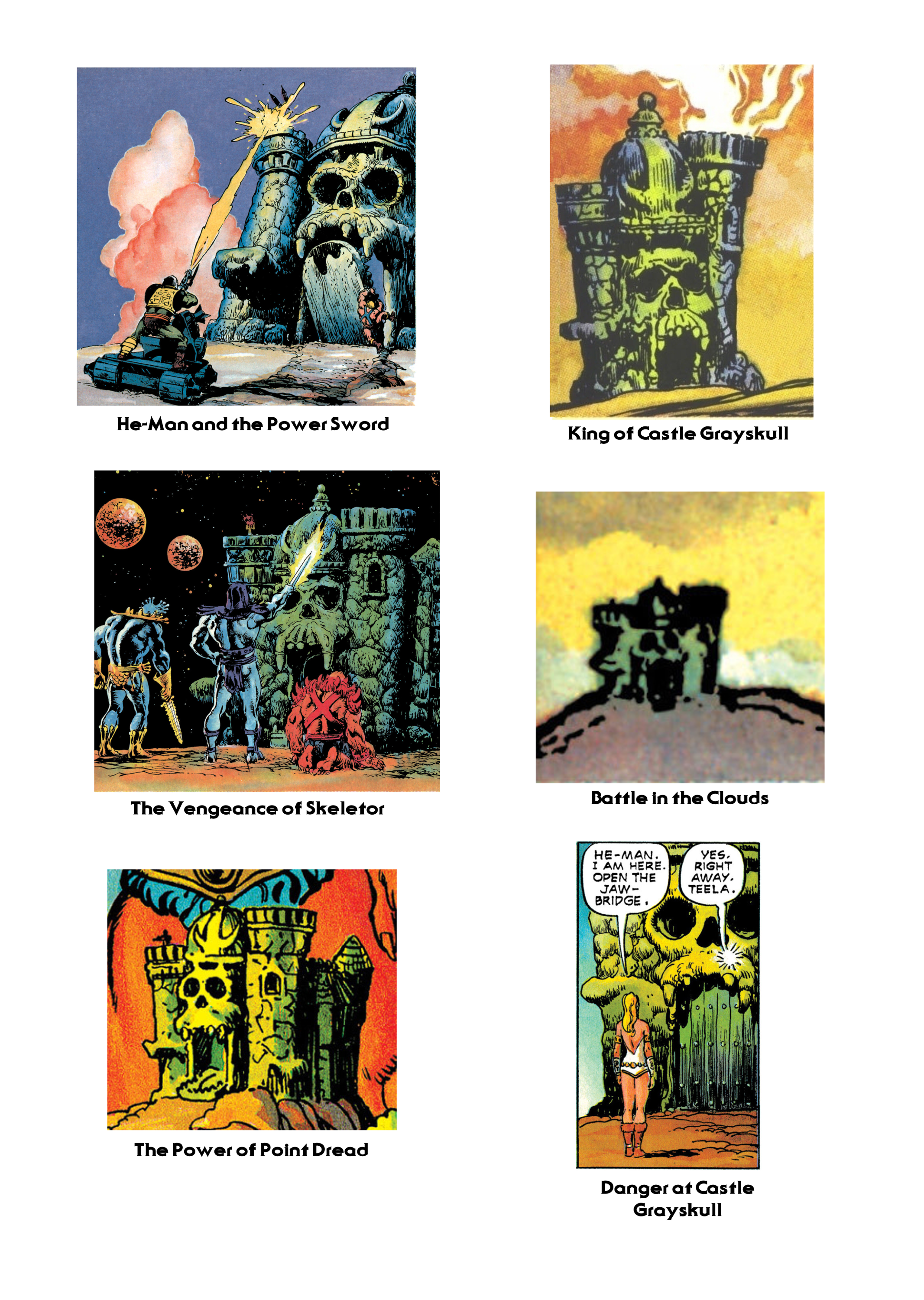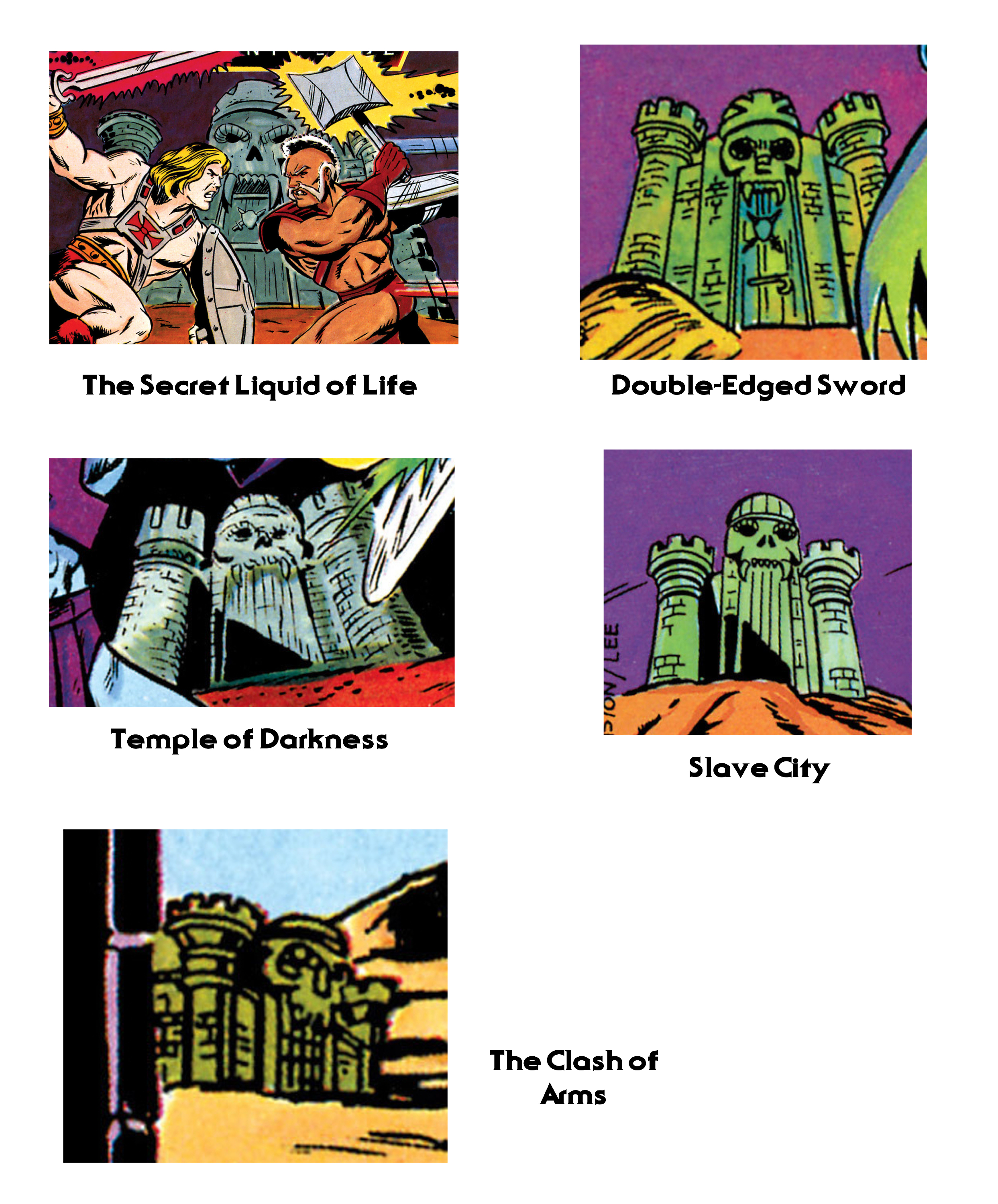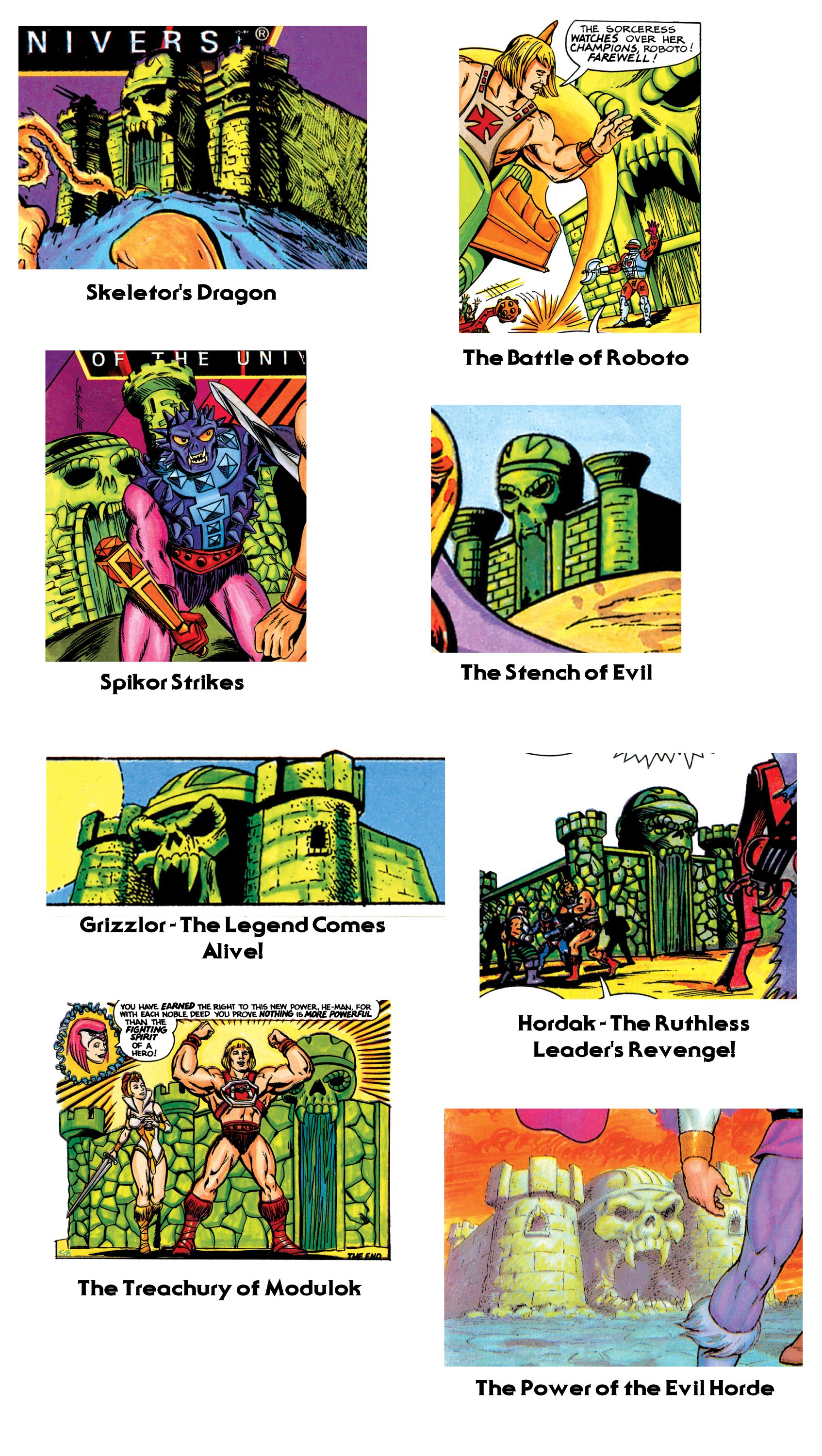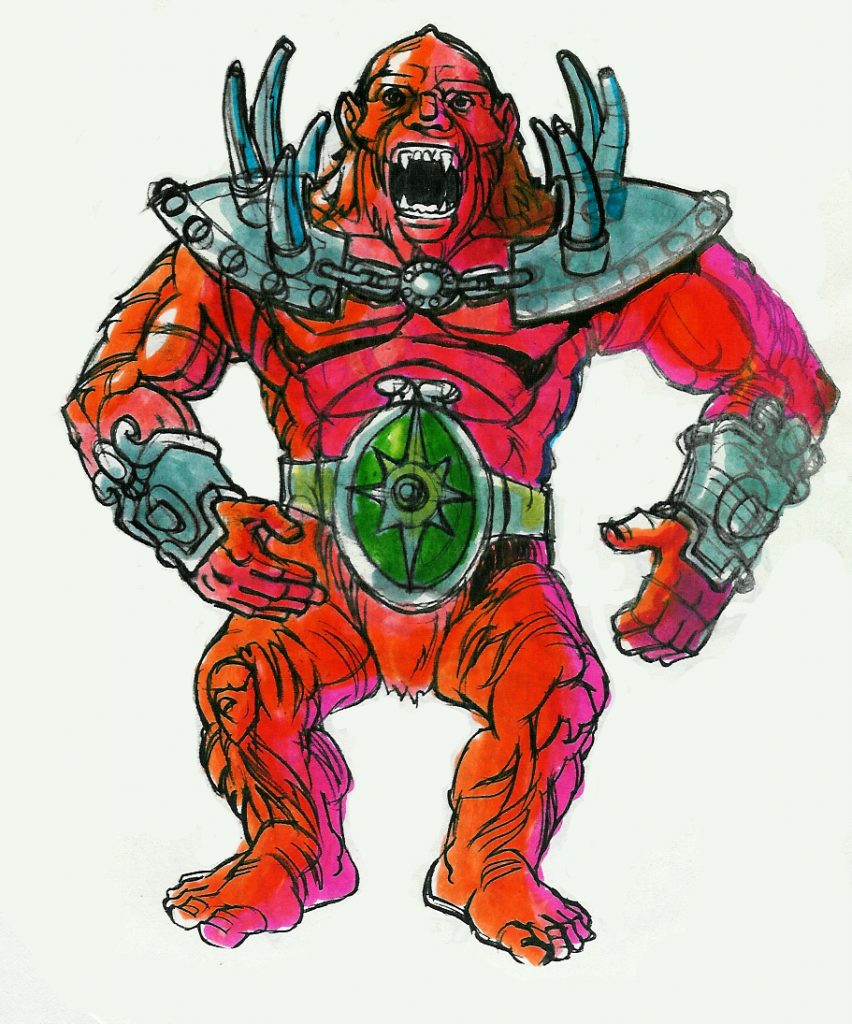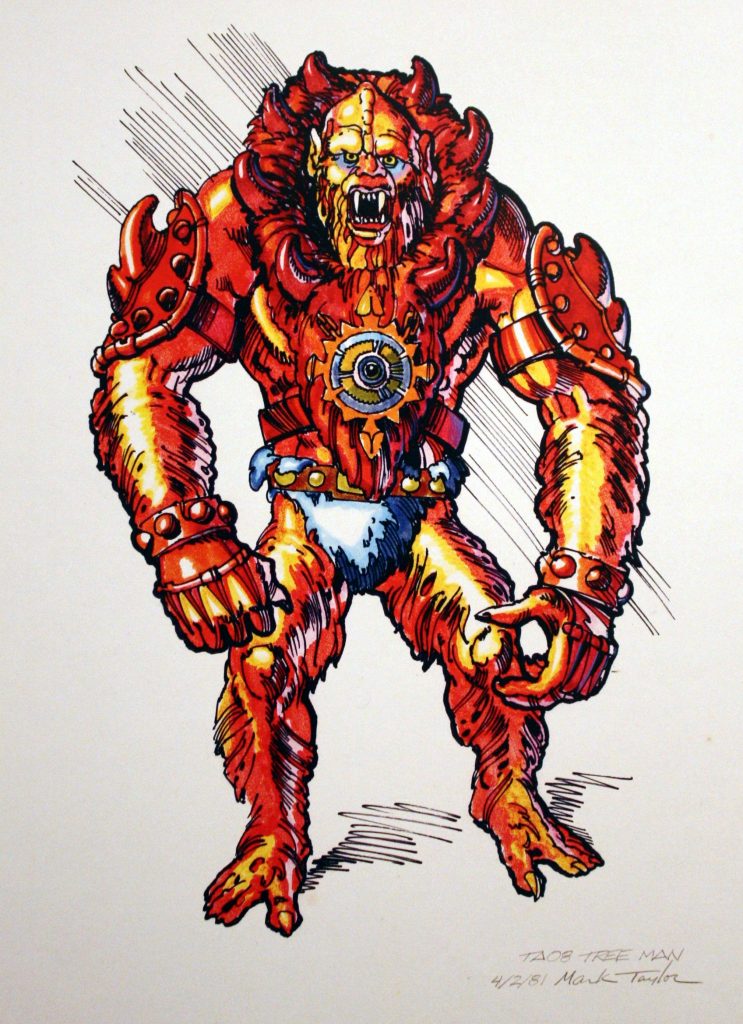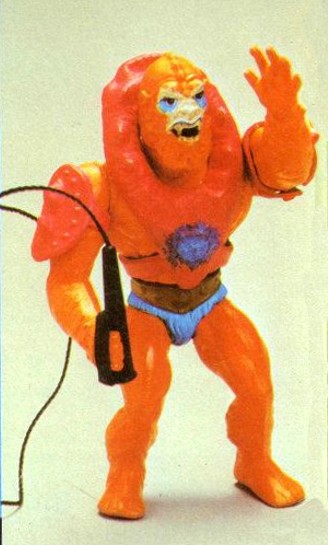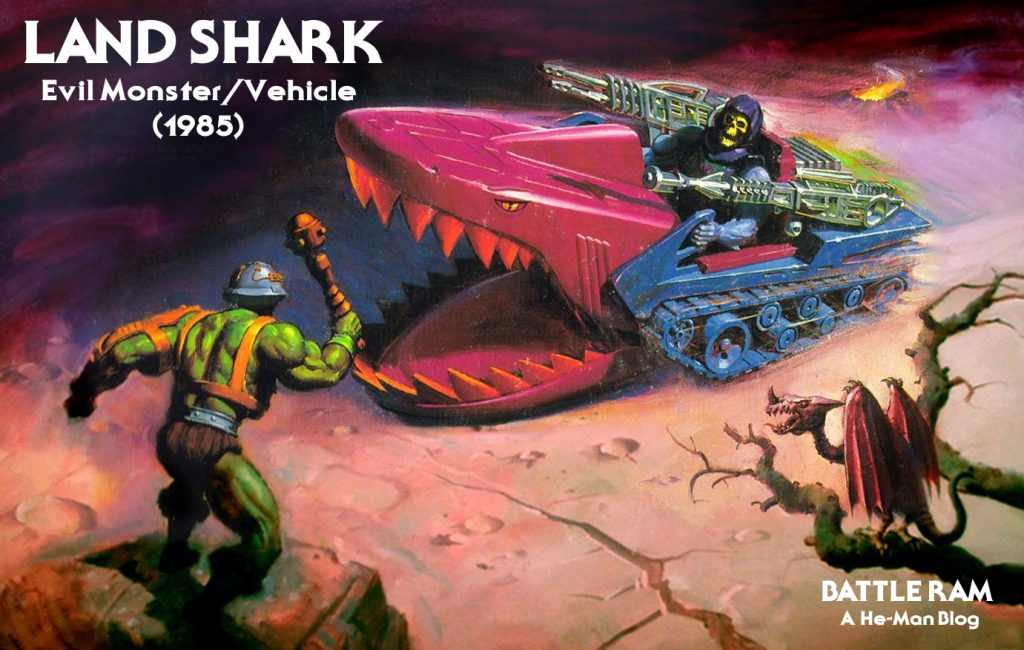
Land Shark is one of those Masters of the Universe vehicles that had to exist. There was no way they weren’t going to get around to making a chomping shark car vehicle, given enough time.
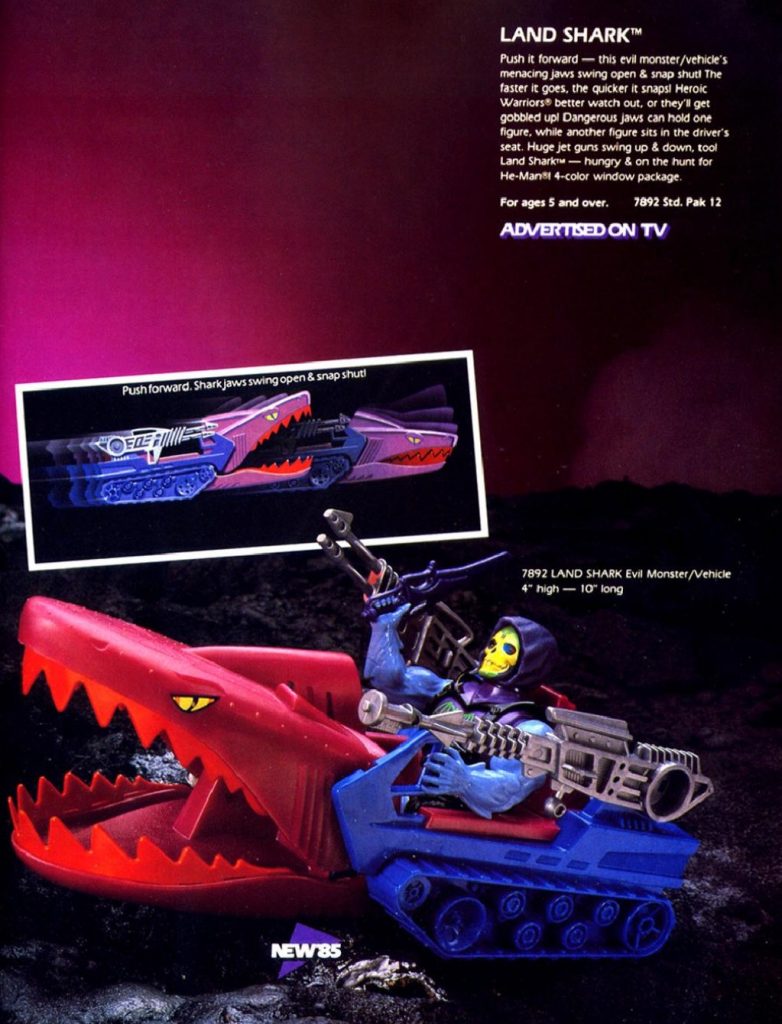
According to The Power and the Honor Foundation Catalog, the idea for making this kind of vehicle came from Roger Sweet, and Ed Watts (who also worked on the Dragon Walker) created the design details in the concept drawing below:
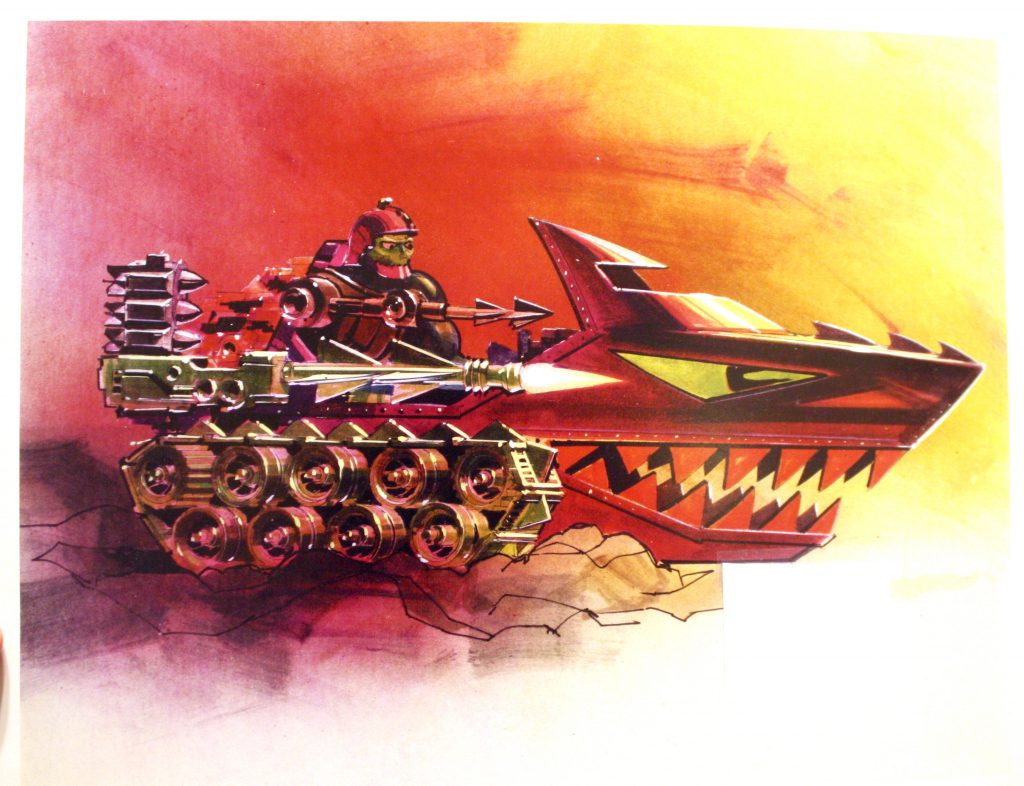
The concept design, compared to the final toy, has much sharper lines (ideal for mowing down foes, but probably too sharp for a kid’s toy) and larger eyes, but the broad ideas that went into the final vehicle are all there. Notice that Trap Jaw is depicted driving the vehicle. In a way, the Land Shark is kind of a vehicular version of Trap Jaw, sharing not only his chomping mechanical jaw but also his color scheme. In Watts’ artwork, they even have similar weapons (although non of Trap Jaw’s attachments actually looked like that). The concept version is maroon and green, while final toy was maroon and blue (all three are predominant colors on Trap Jaw).
The cross sell artwork for the Land Shark (which incidentally seems to have been rarely used) is based closely on the final design used on the toy:

The trademark for Land Shark was filed September 10, 1984, and the patent was filed on November 13, 1984 .
Land Shark was sold individually and in a set with Battle Armor Skeletor. The box art on both sets was illustrated by William George:
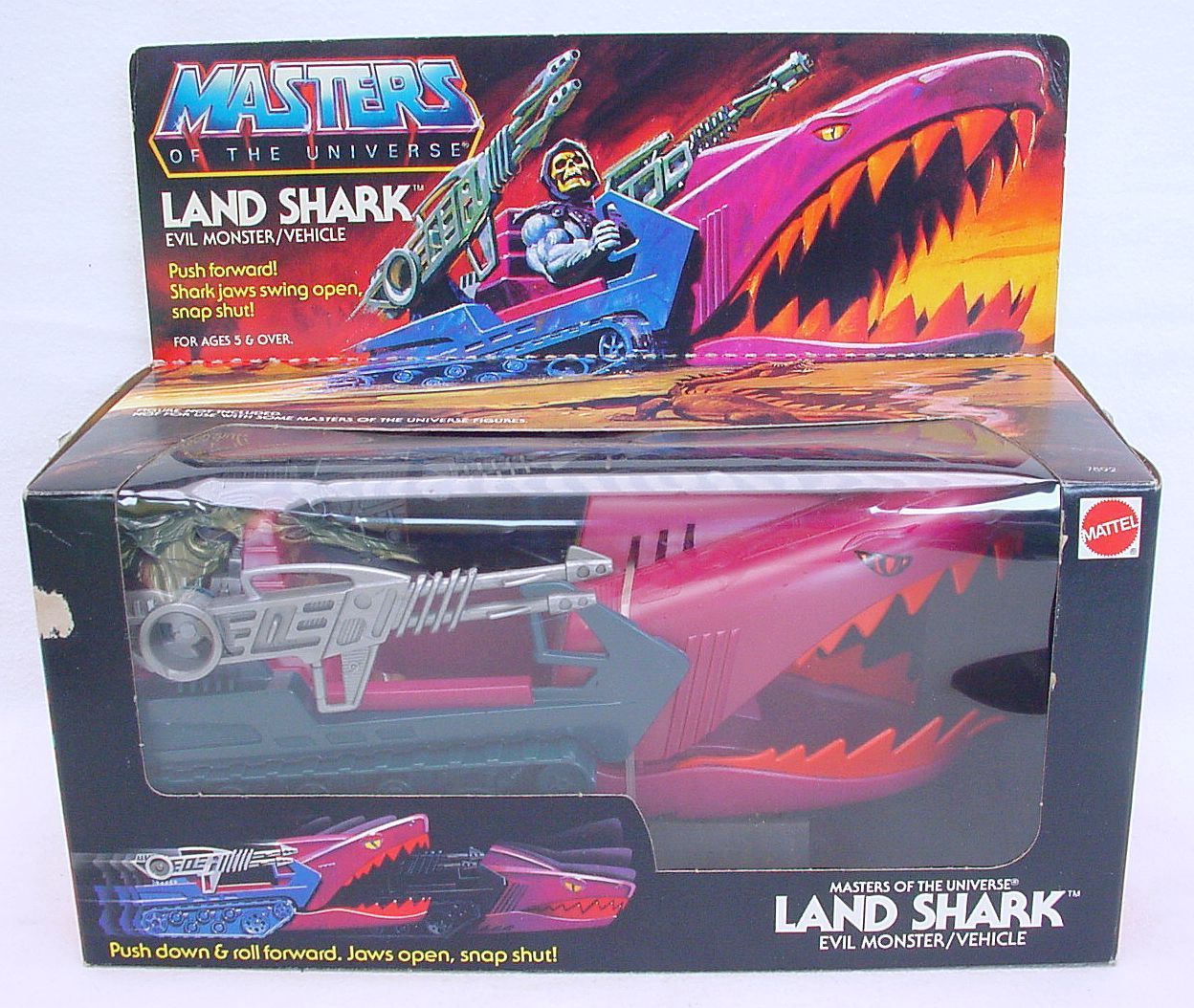
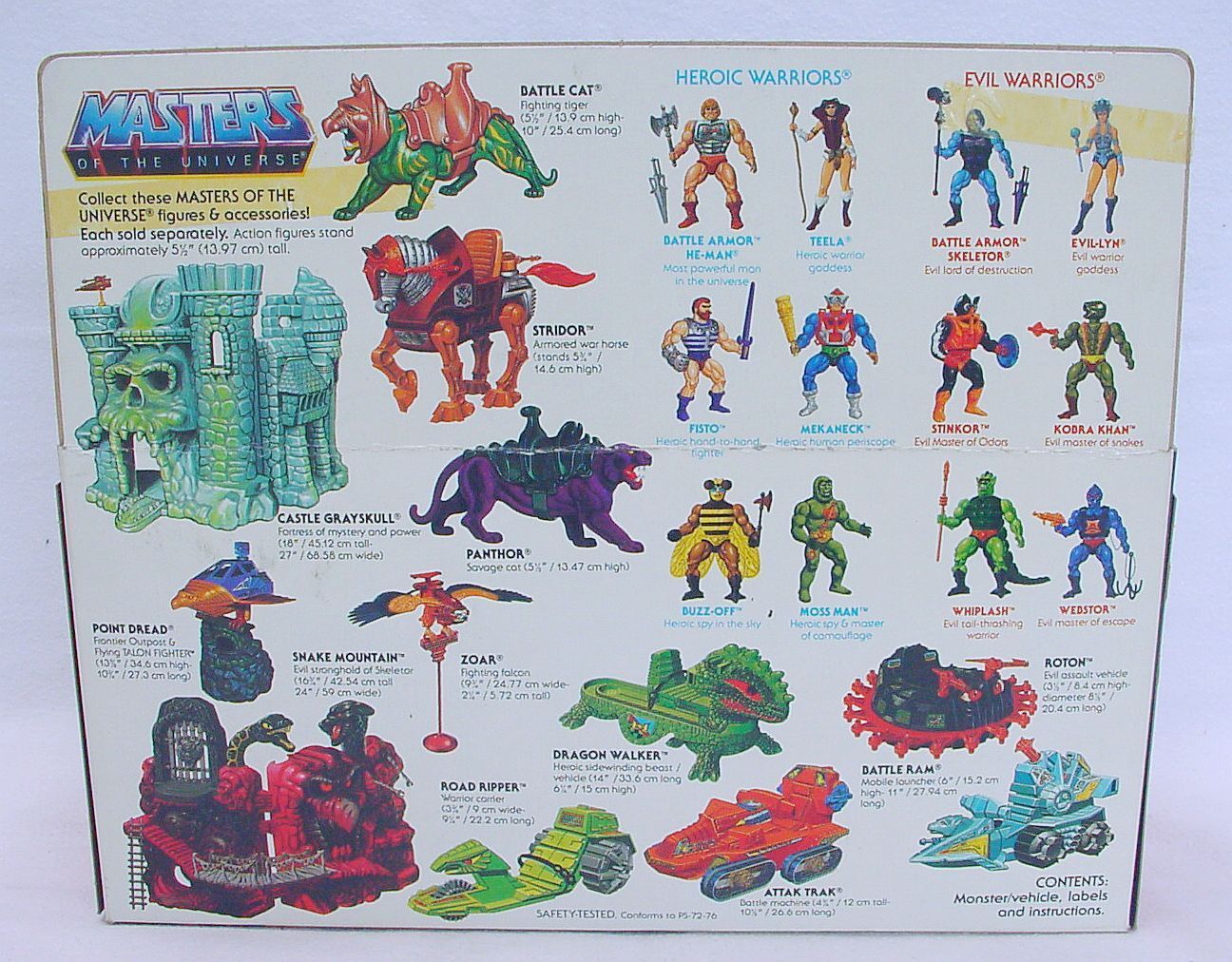



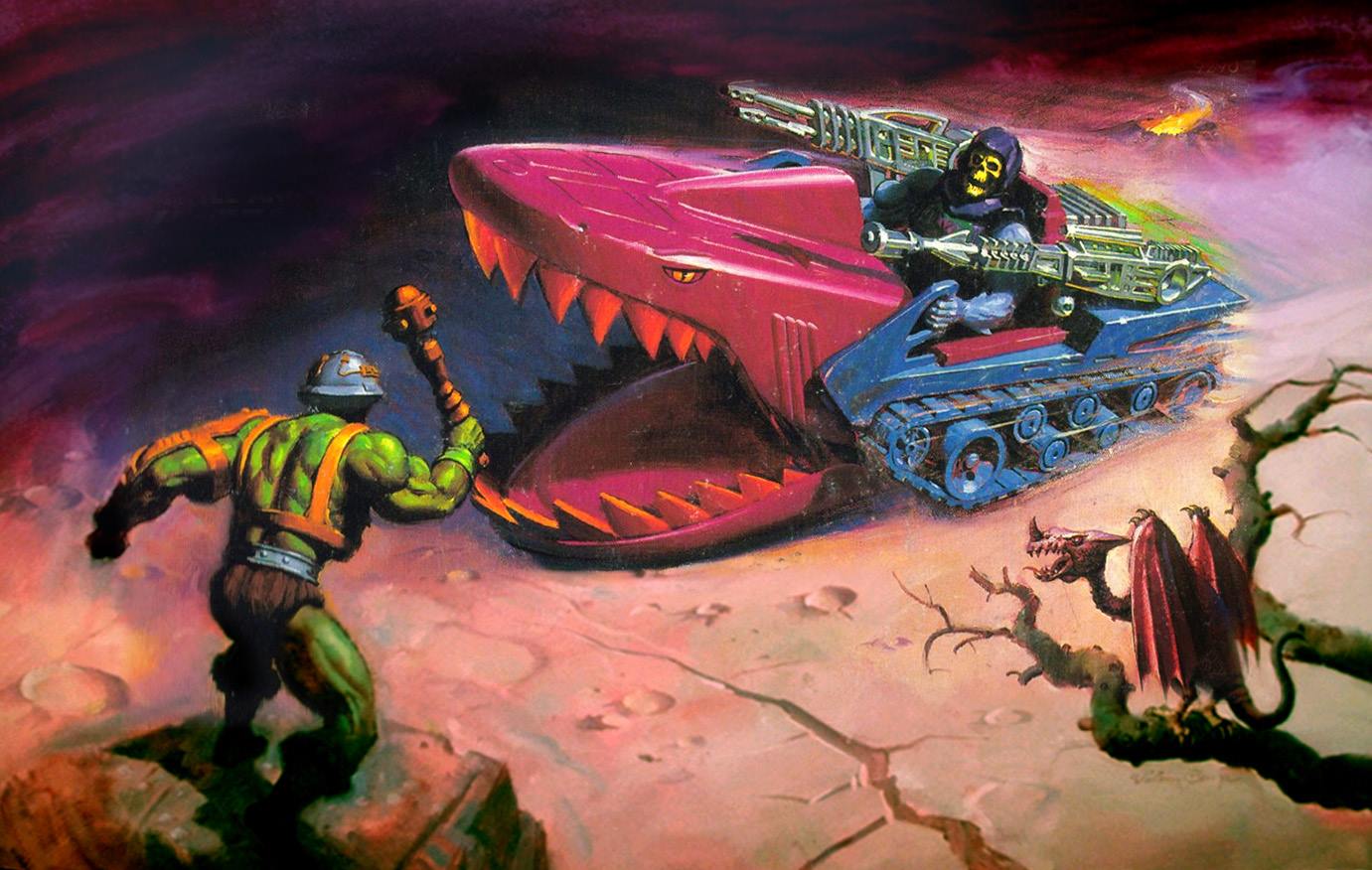
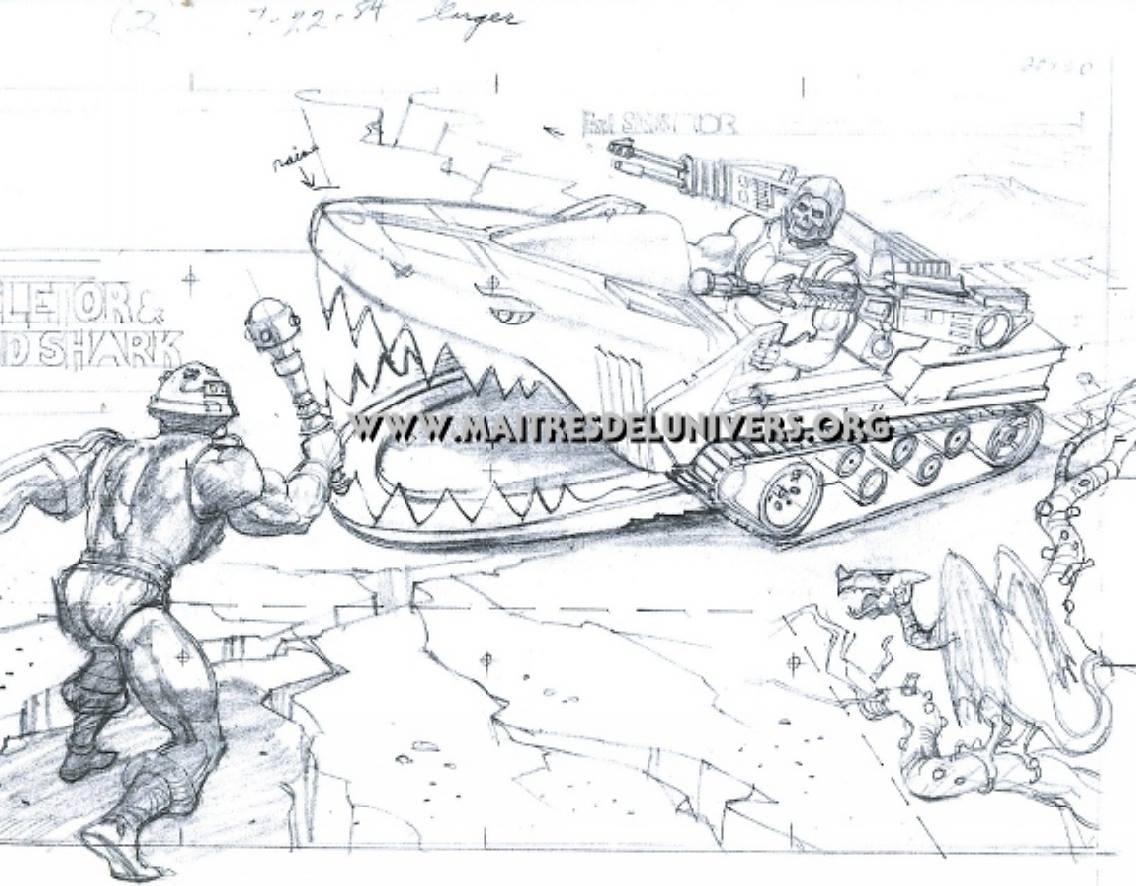
Land Shark appears with some frequency in the series of minicomics released in 1985. The depiction in comics more or less matches the look of the final toy, although the guns are simpler and seem to connect to the vehicle with a different kind of hinged joint (this is true in all of the minicomic appearances, with the exception of Leech). This may represent an earlier prototype design. Excerpted images below are from the Dark Horse He-man Minicomic collection.
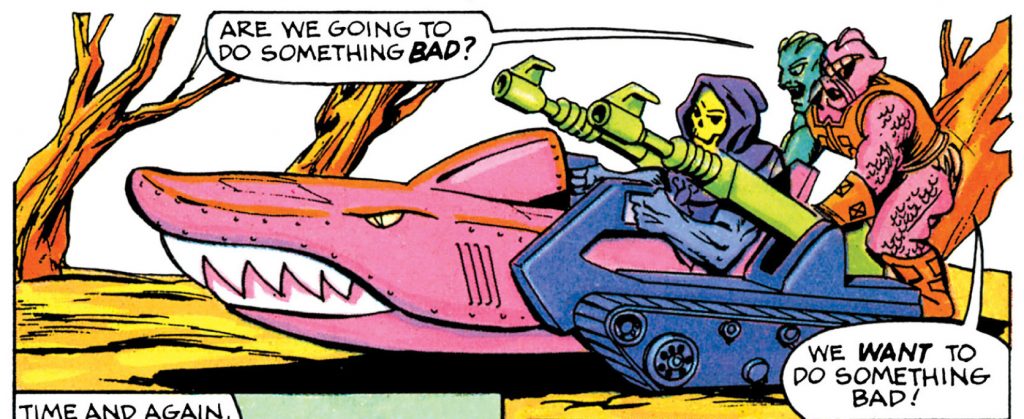
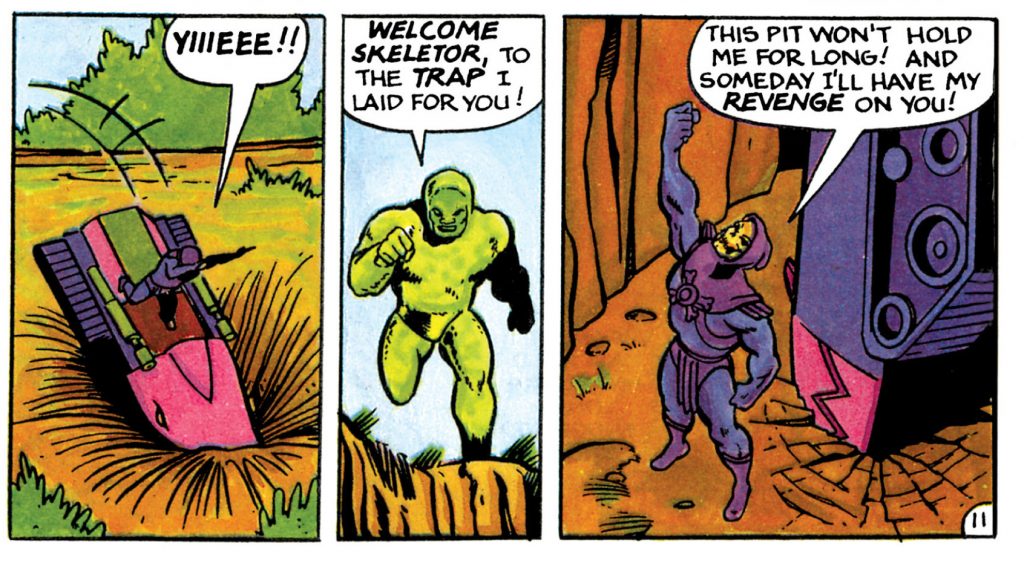
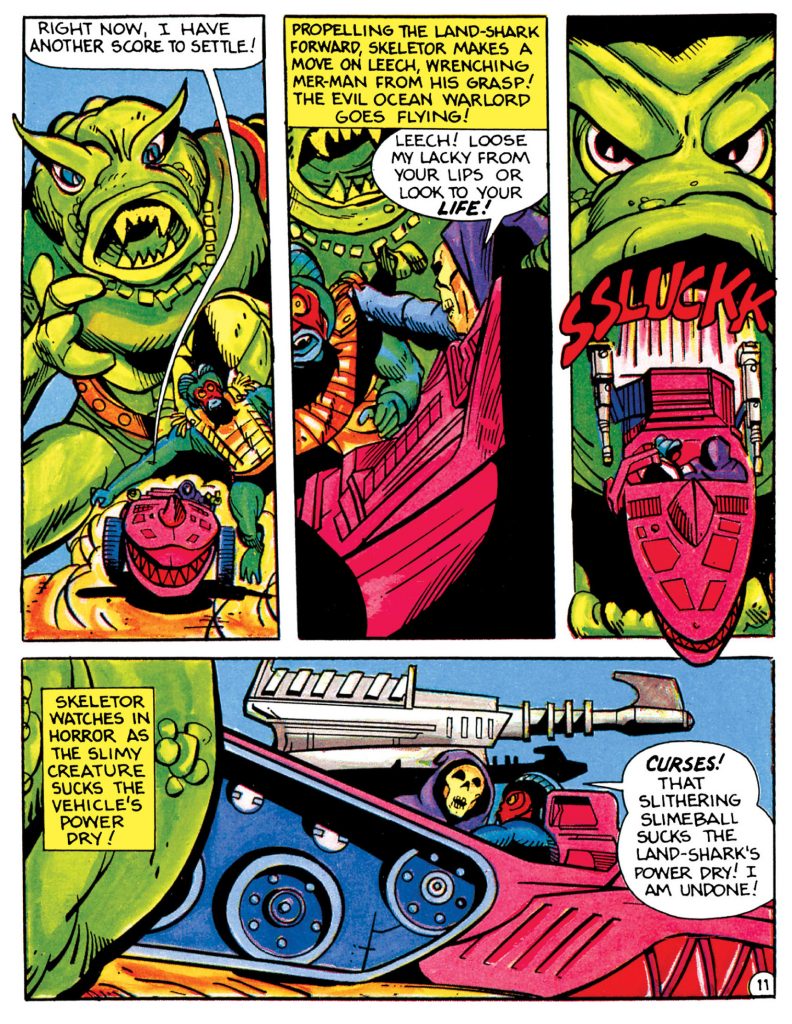
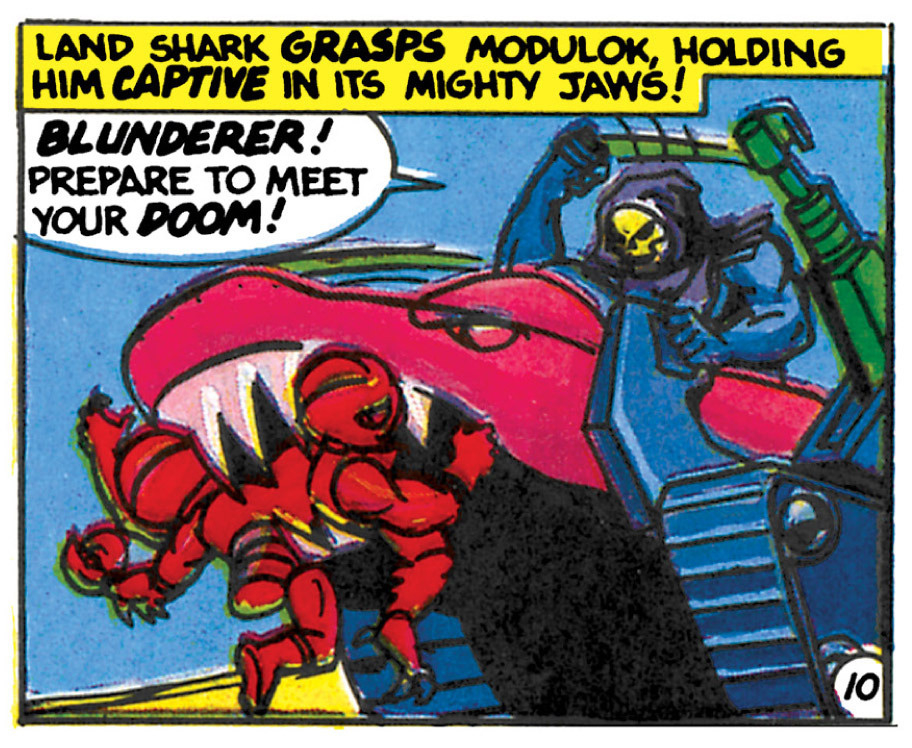
Curiously, Hordak drives the Land Shark in Hordak – The Ruthless Leader’s Revenge:

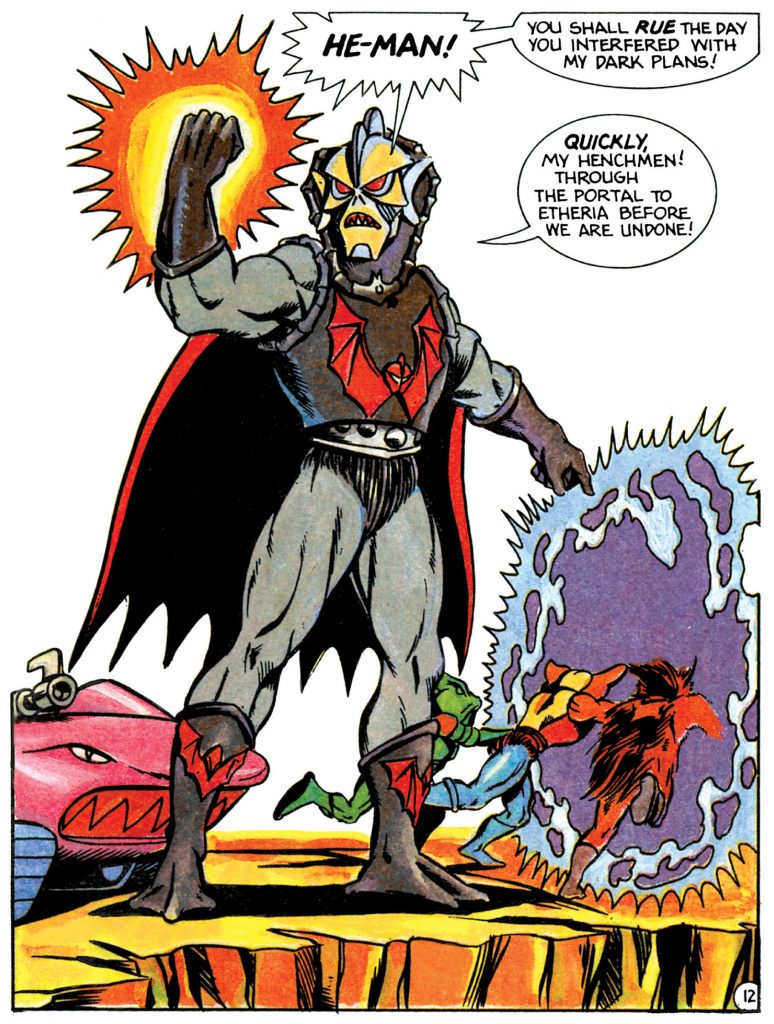
Errol McCarthy produced a couple of illustrations for the Land Shark. One of them was used in the 1987 Style Guide, which described the vehicle this way:
Role: Evil man-eating assault vehicle
Power: Power to seek, seize and consume the enemies of Skeletor
“Evil man-eating assault vehicle” seems like a good tag line for the toy. I’m surprised it wasn’t used on the actual packaging.

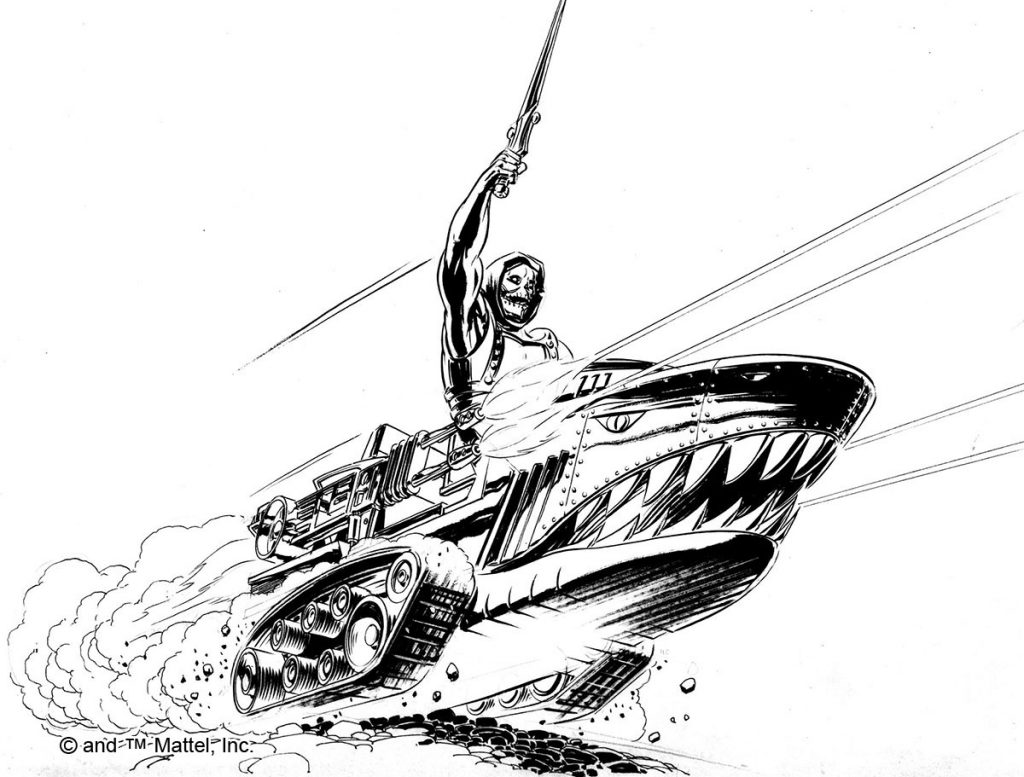
Land Shark makes a couple of appearances in the Golden books stories: A Hero In Need and The River Of Ruin (images via He-Man.org):
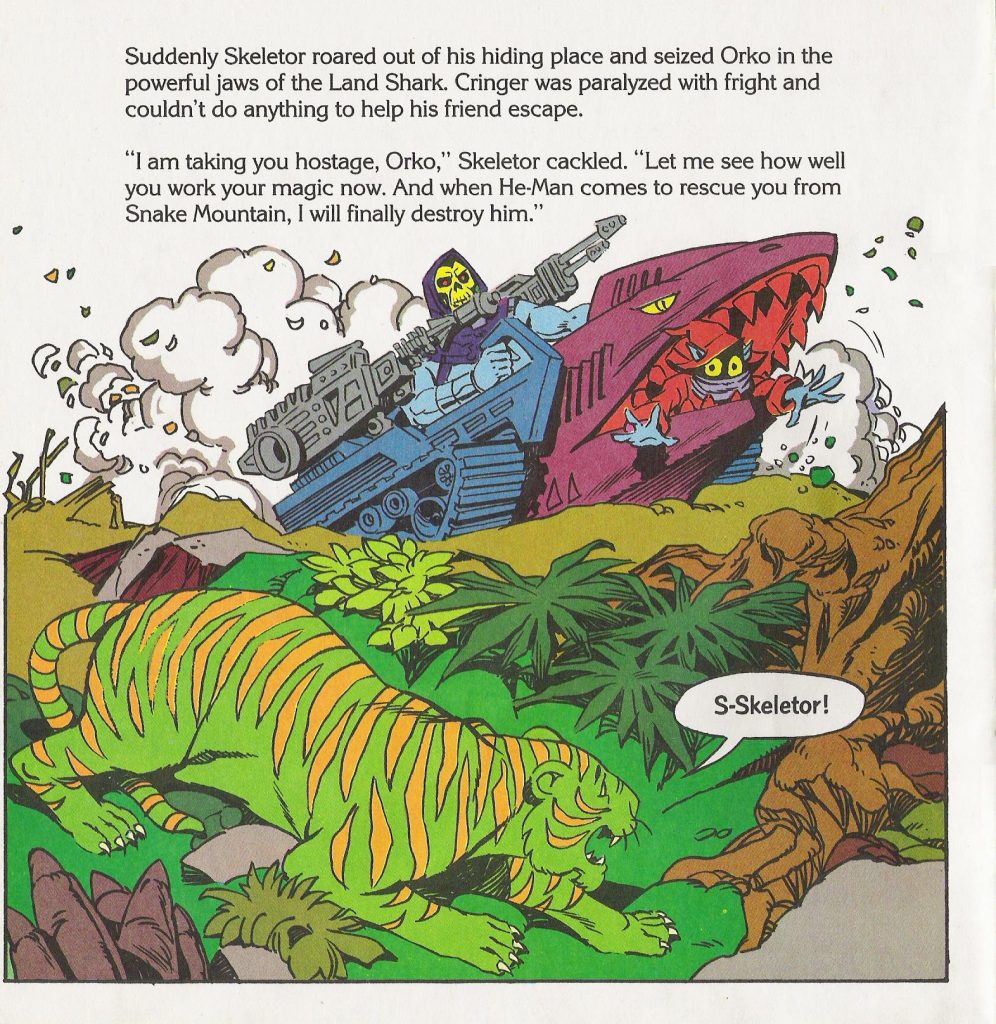
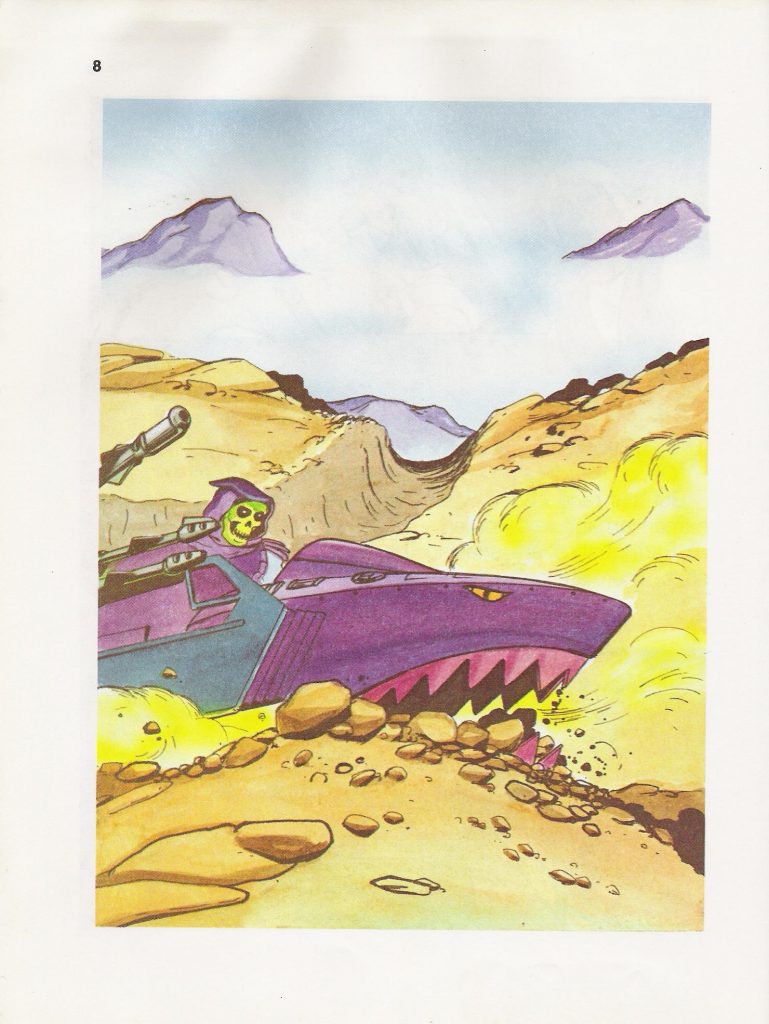
William George included the Land Shark in his 1985 and 1986 posters:
Earl Norem pitted the Land Shark vs the Laser Bolt in a poster included in the Spring 1986 issues of Masters of the Universe Magazine:

Norem also included the vehicle in his “Lake of Mystery” poster, although interestingly he turns it into a water vehicle in the surreal scene below:
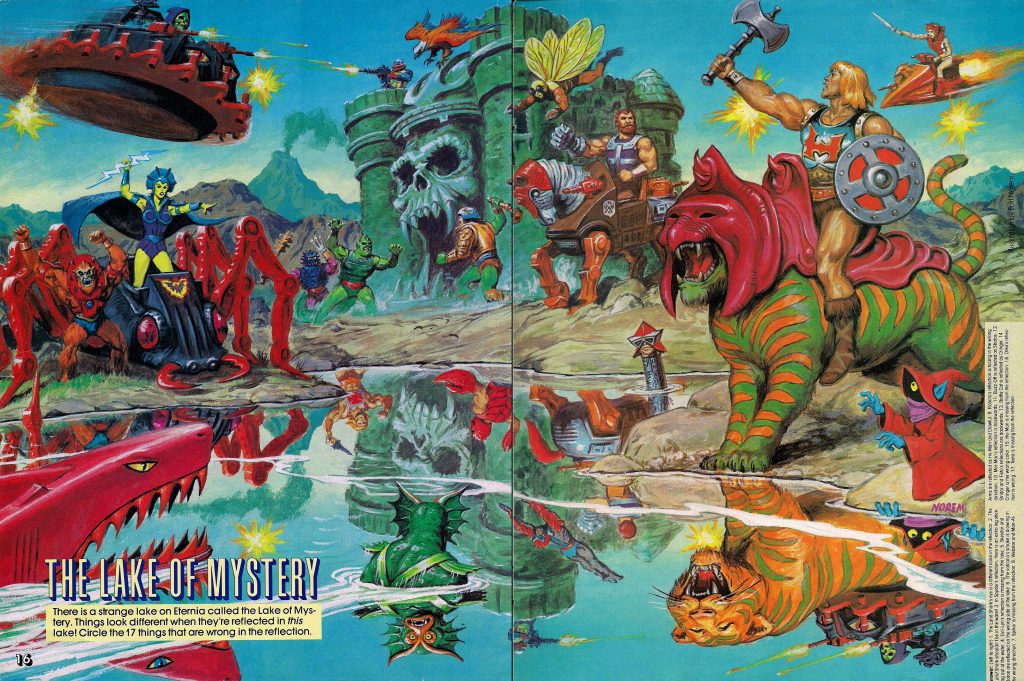
The same issue of MOTU Magazine features a story called “The Comet Warriors Have Landed!” The vehicle also makes an appearance there:

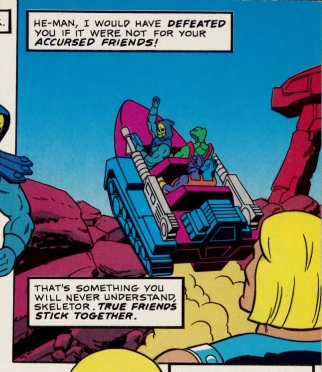
The vehicle only made two appearances in the Filmation He-Man cartoon, in the episodes “The Gambler” and “The Cold Zone”. Predictably the vehicle is simplified for animation purposes. The guns were also dropped from the sides. Update: Dušan M pointed out that the animators also added a retractable roof so they wouldn’t always have to animate a driver. Aidan Cross points out that the Land Shark appears to be sentient, since in “The Cold Zone” it snaps aggressively when the Attak Trak says it would rather not be left alone with the Land Shark.
The Land Shark is a gimicky vehicle to be sure, equal parts menacing and comical. But, it’s undeniably one of the coolest vehicles released for the evil warriors, who never quite seemed to have enough of them. The lion’s share of always seemed to go to the good guys.


